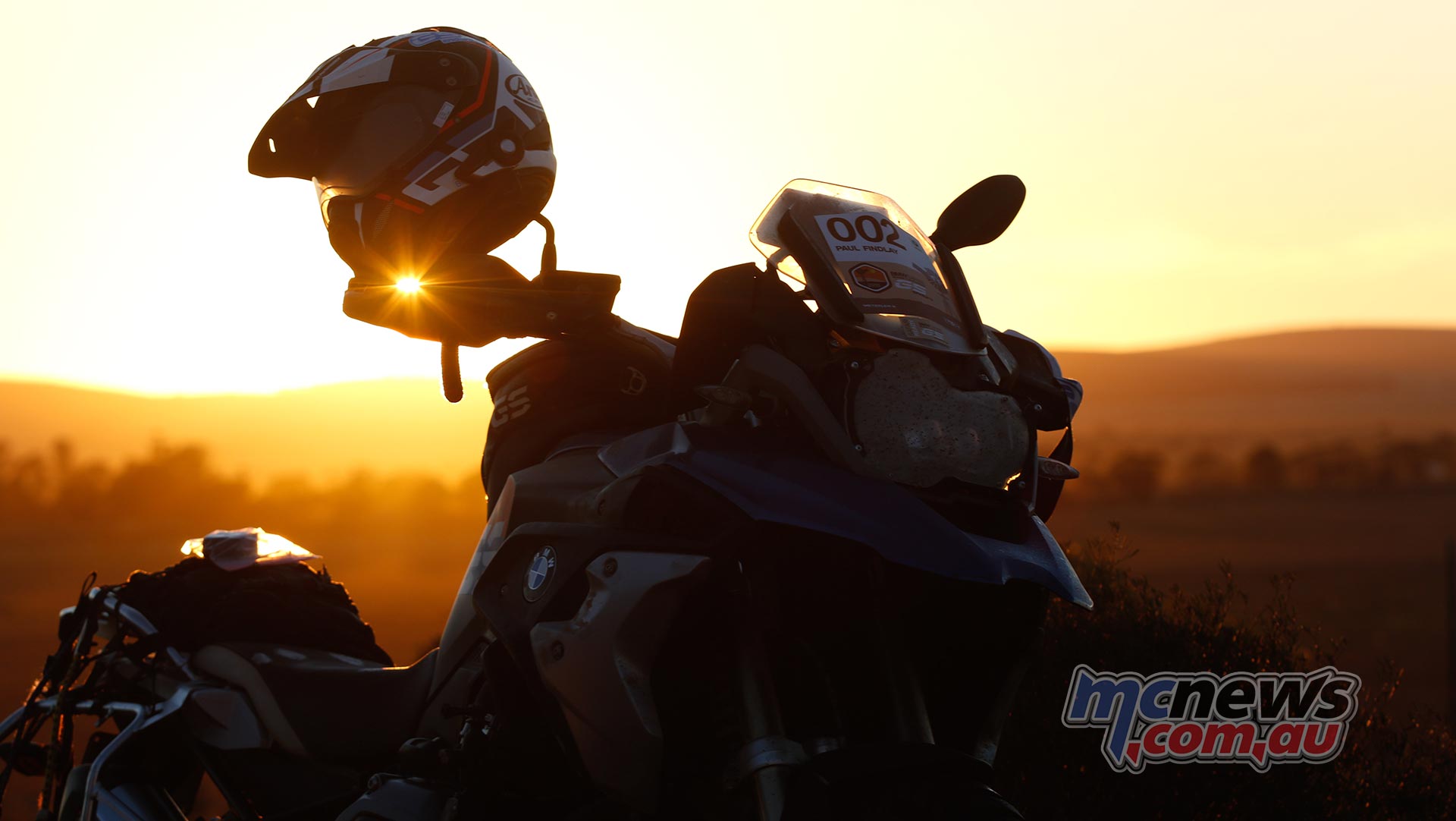2019 BMW GS Safari Enduro
By Trevor Hedge
Images by Damien Ashenhurst and Trev
2019 BMW GS Safari Enduro saw over 80 riders head on an adventure taking them from the banks of the Murray River at Mildura in north-western Victoria, through to the inland heart of Australia, Alice Springs, in what is the 25th year of GS Safari.
The route chosen was a balance between the most intrepid and the most inspiring. As this is the more challenging of the two GS Safari events held each year, thus the ‘Enduro’ suffix added to the GS Safari moniker, this is certainly no walk in the park for most participants. The regular GS Safari takes almost 200 riders but Safari Enduro gets a bit more extreme thus numbers are generally less than half that of the more mainstream option.
In preparation for some of the sand riding and trials ahead, many riders also signed up for the BMW GS Off-Road Training Course that was staged in Mildura across the immediate two-days prior to Safari getting underway.
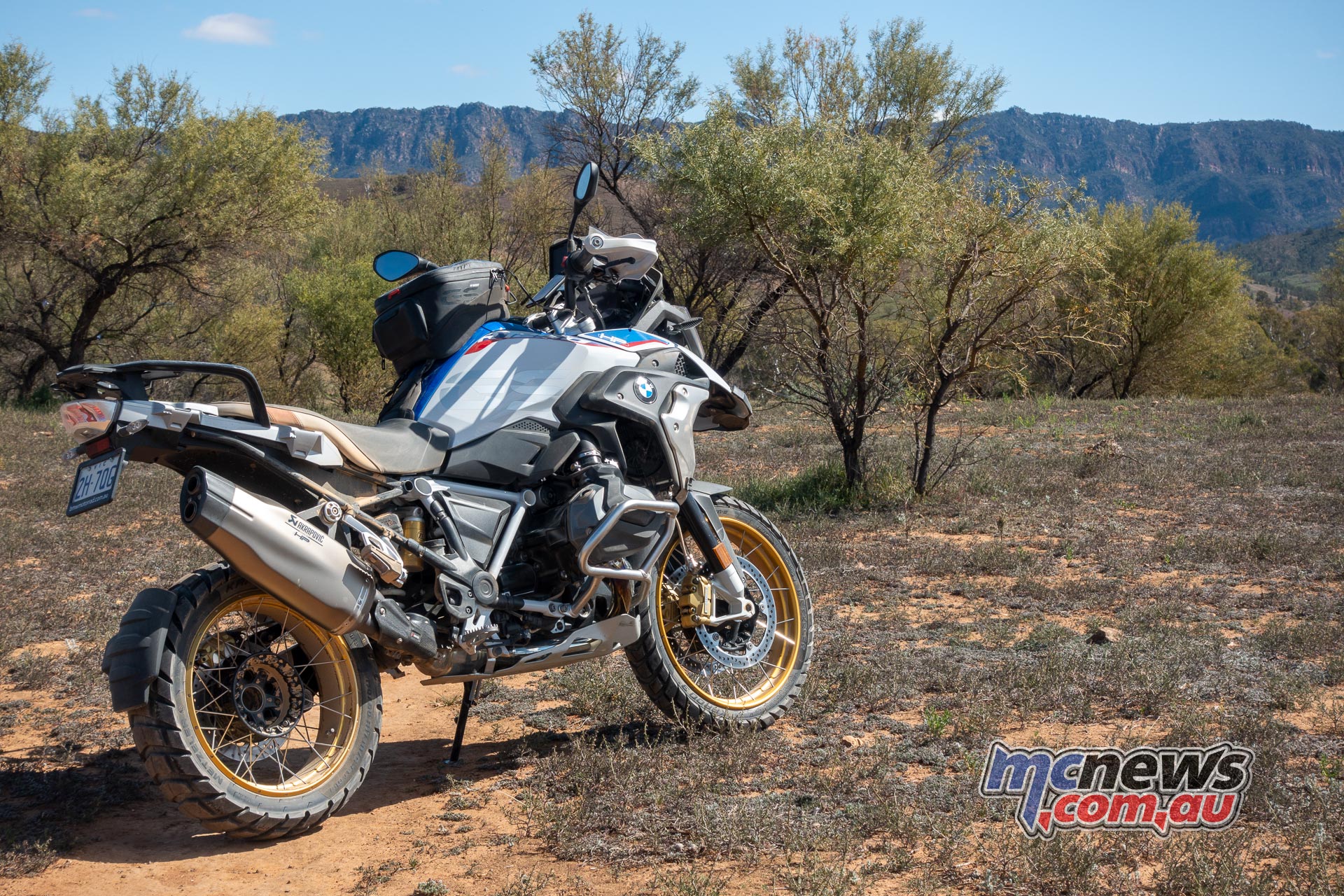
Dinner on the opening night was a chance for riders to reconnect with other participants they’d met on previous GS Safari adventures. For many these Safari events are simply a must-do every year, and plenty have a dozen or more GS Safaris under their belt.
Some riders are on their GS all the time, others are lucky to get out once every couple of months due to various family commitments or work pressures. Some are doctors, some are tradies, others head up large companies and between riding stints on Safari are on the phone back to the office co-ordinating bids for government contracts.
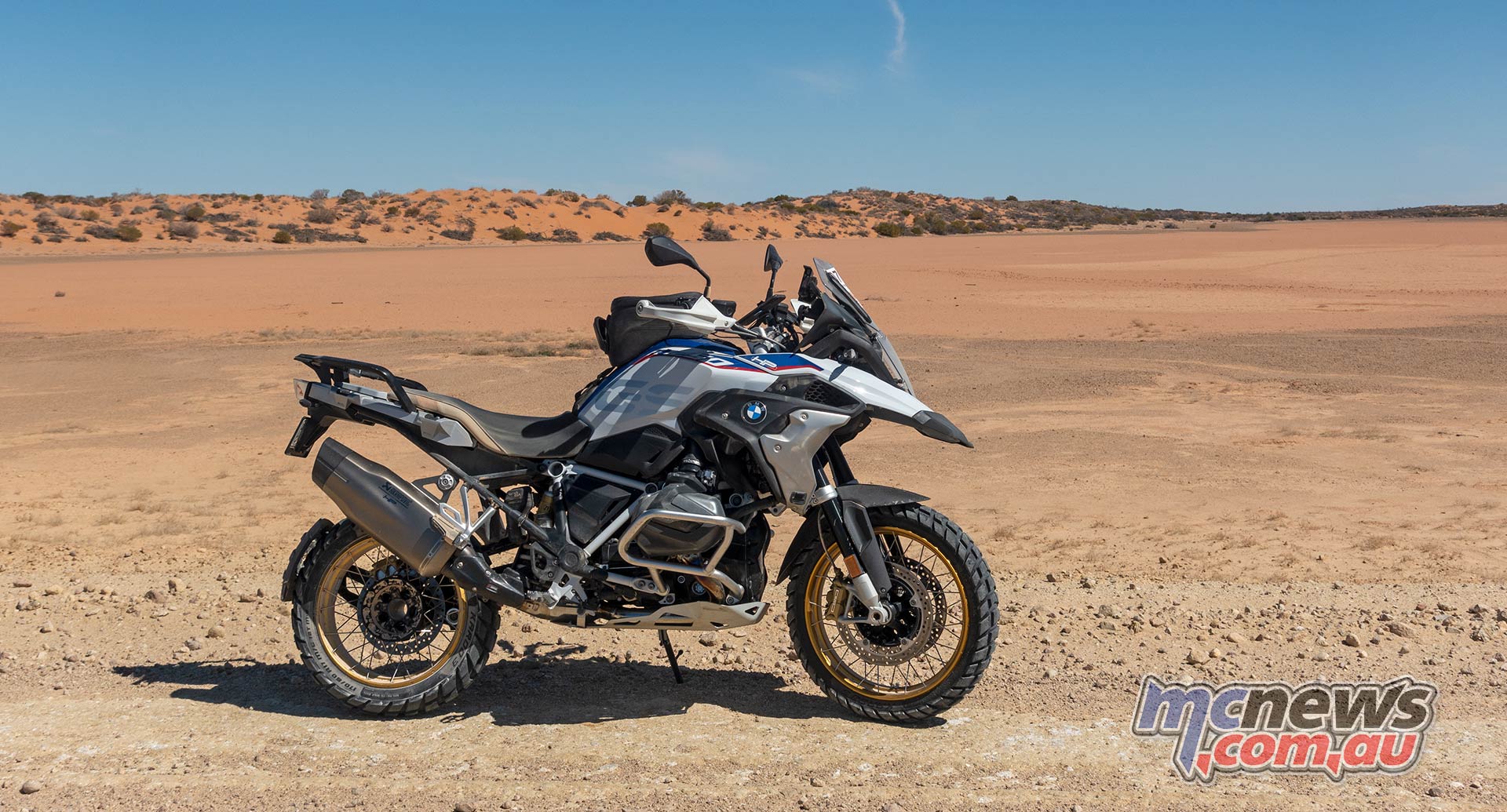
Some are obviously quite well off, while others are still paying off their motorcycle and their attendance at GS Safari Enduro is very much a treat they have to strive quite hard to be able to afford.
Some are travelling on their own, some are with a group of friends or work-mates. Out on the trail though, everyone is equal, everyone chips in and generally egos and competitive machismo are largely kept in check.
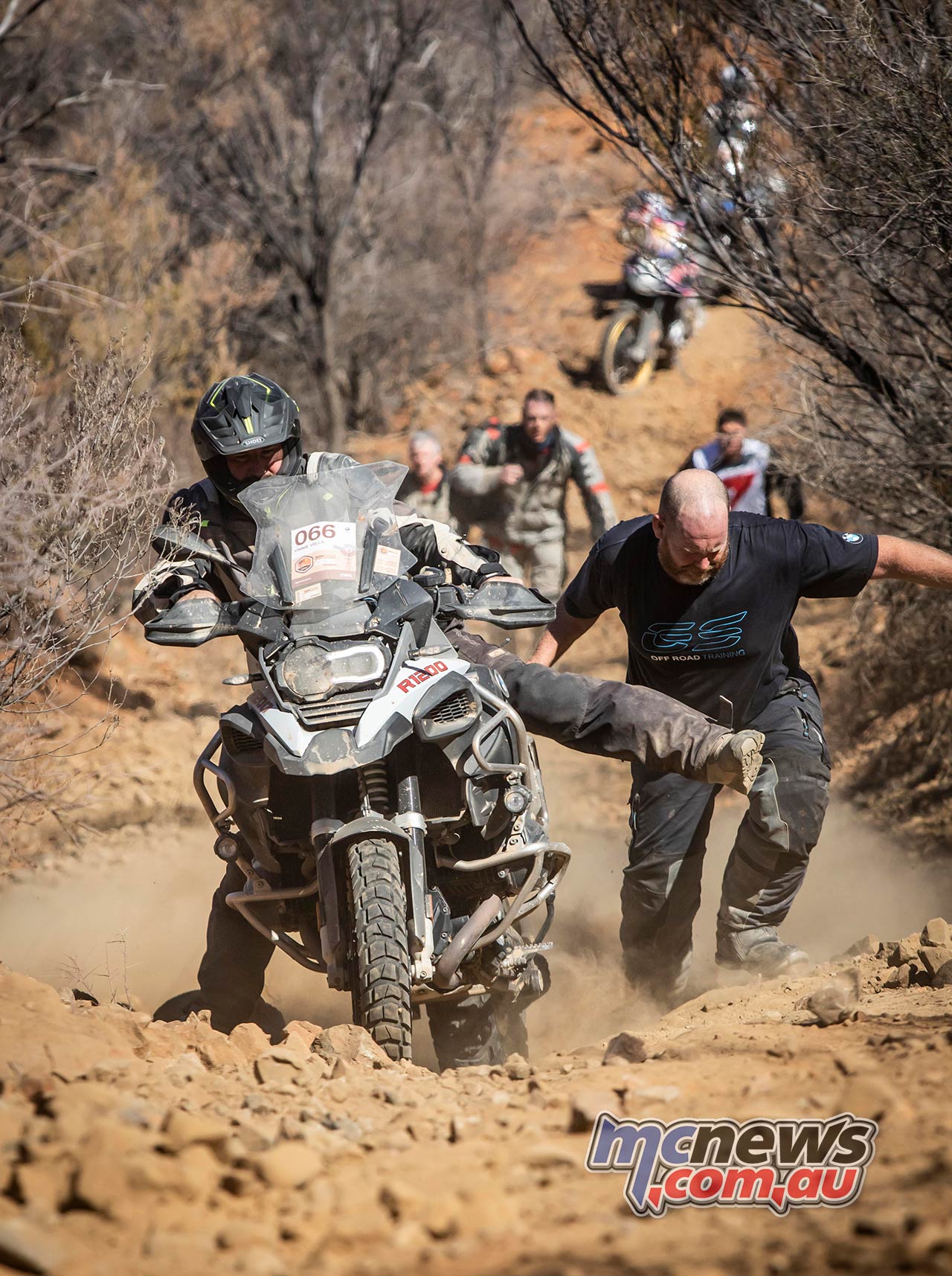
It is somewhat of a team effort as there is always someone ready to chip in and help to fix a puncture, help you pick your bike up, or give you a shove from behind to assist getting up a snotty incline. All that help is given without any snide remarks or put-downs and this helps ensure that no matter what, a positive vibe pervades, and people remain energised. Even when the going gets a little tough.
GS Safari Enduro Day One
Mildura to Peterborough – 475 km
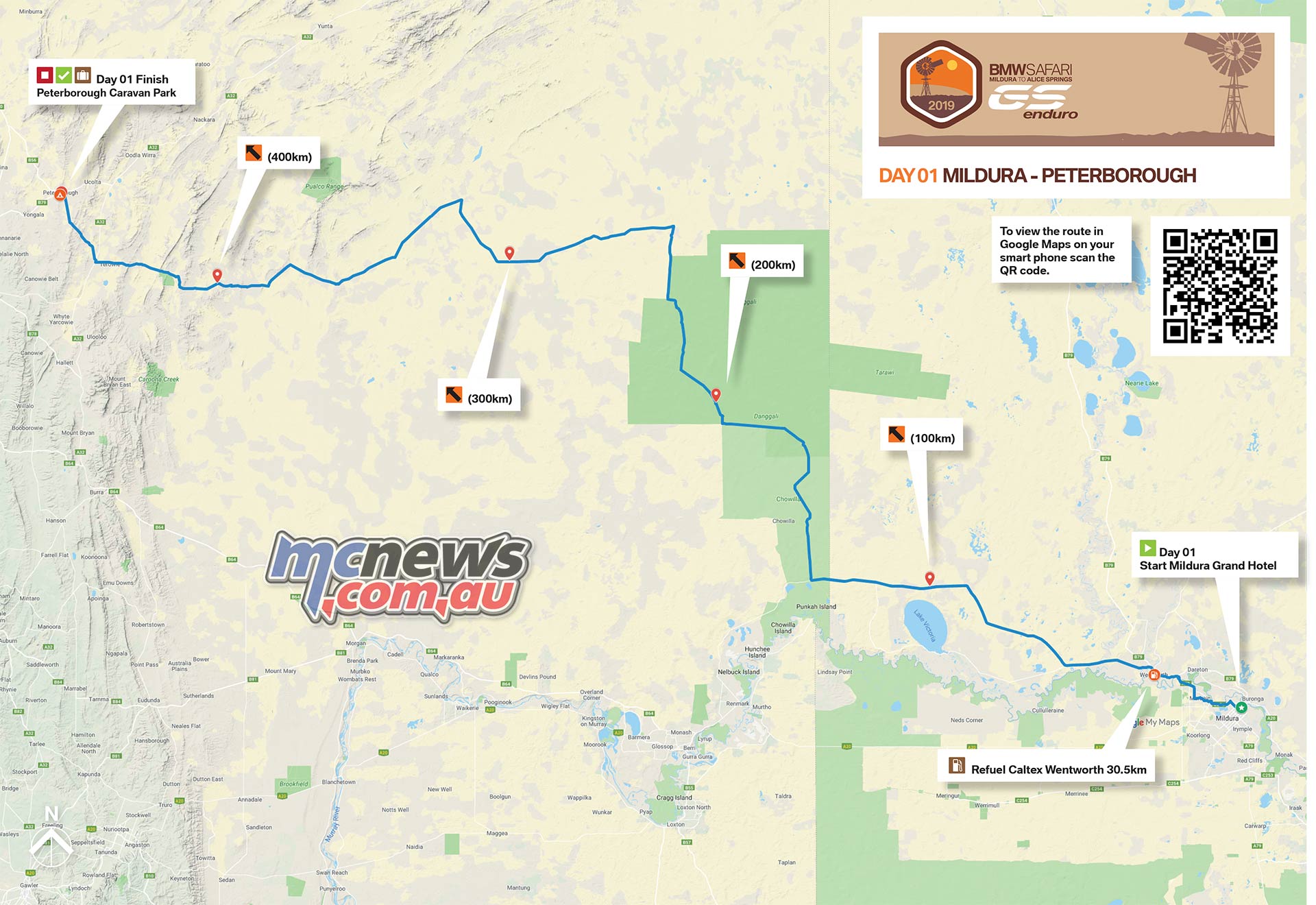
Mildura to Peterborough – 475 km
It was a brisk morning when we sporadically filed out of Mildura. To help spread the 80-odd riders out there was a sixty-minute departure window, so riders could leave at various times rather than en masse. This is not a ride where people follow nose to tail, you can often ride for half an hour or more without seeing another rider.
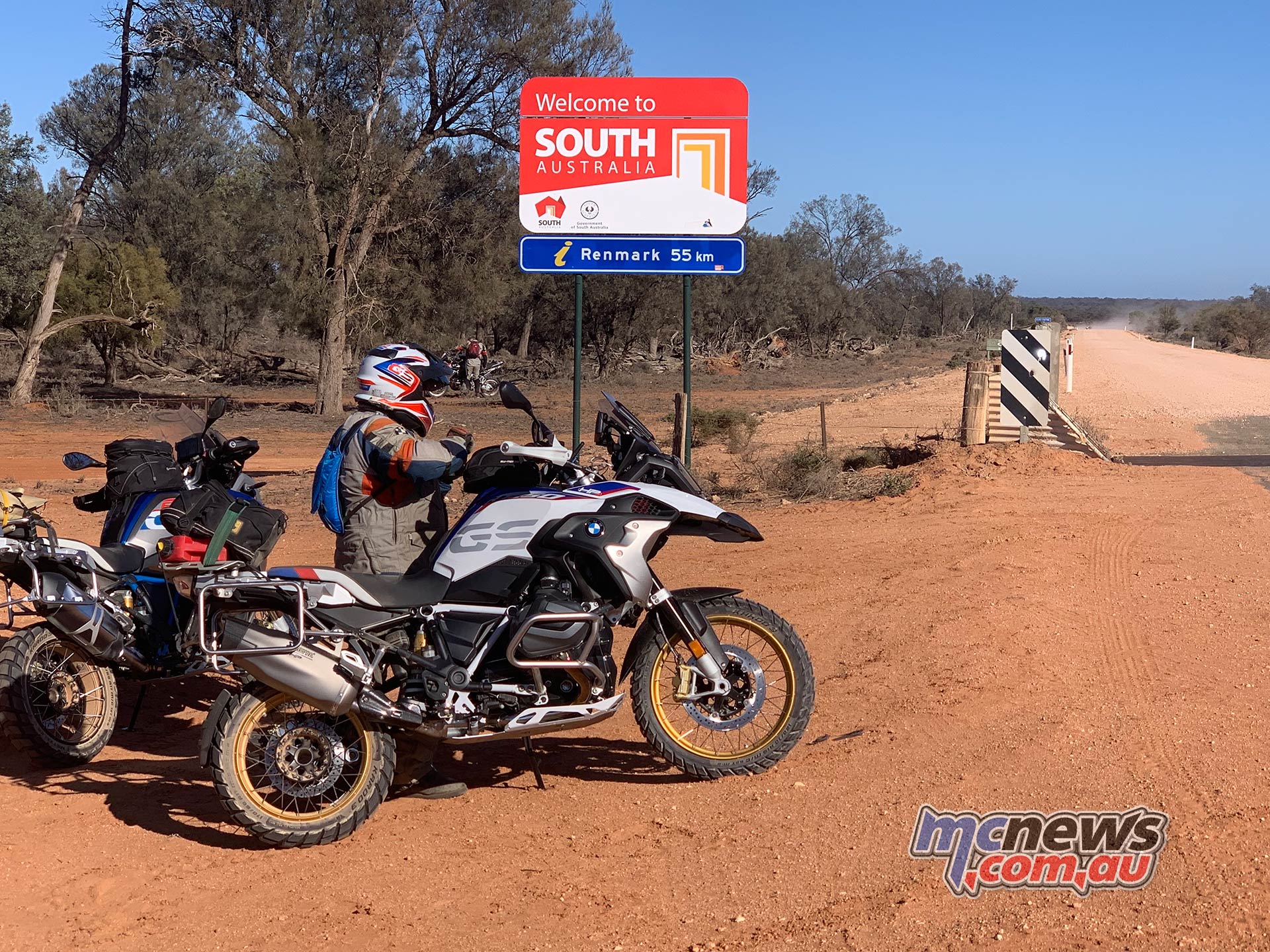
After crossing the Murray and Darling Rivers, we turned northwards and headed for the Danggali Conservation Park and Wilderness Protection Area, Australia’s first UN recognised Biosphere Reserve.
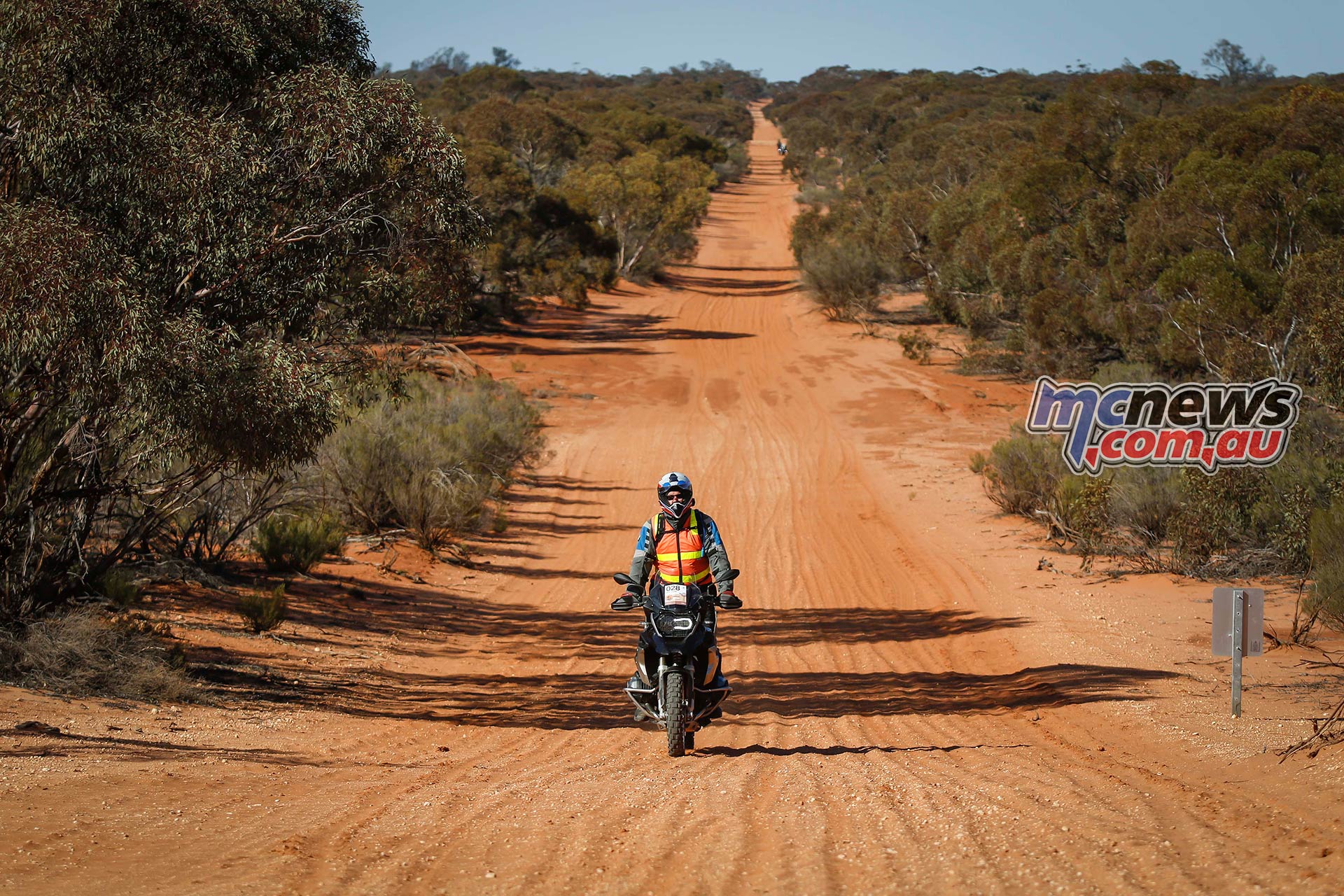
The landscape switches back and forth between Mallee wilderness to arid wetlands, and at the time we passed through Chowilla Track it was looking very arid indeed.
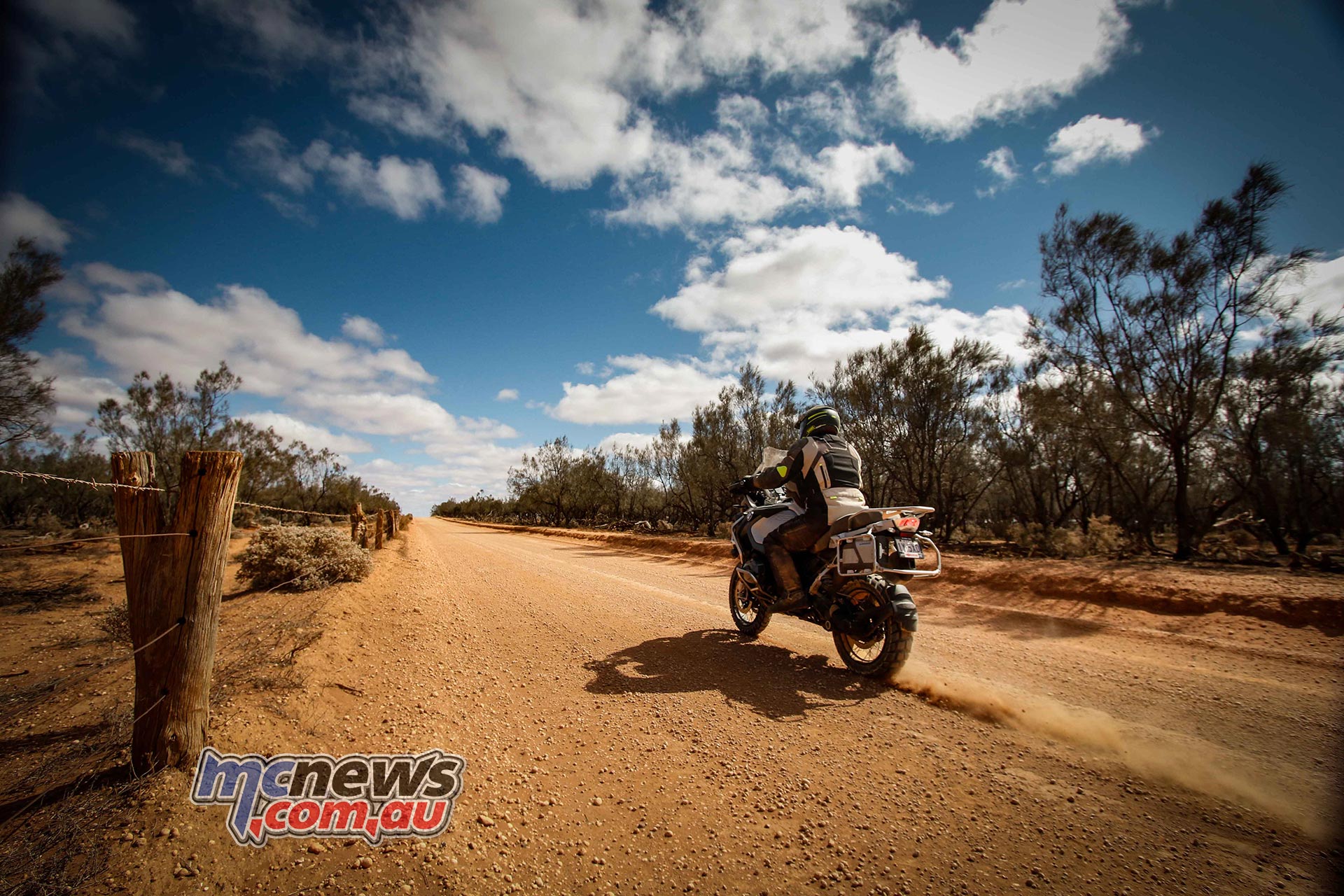
In fact, many sections of the track were much sandier than they had been only a few weeks earlier when the recce for the route was ridden by organisers. The sand led to somewhat of a baptism of fire for plenty of riders.
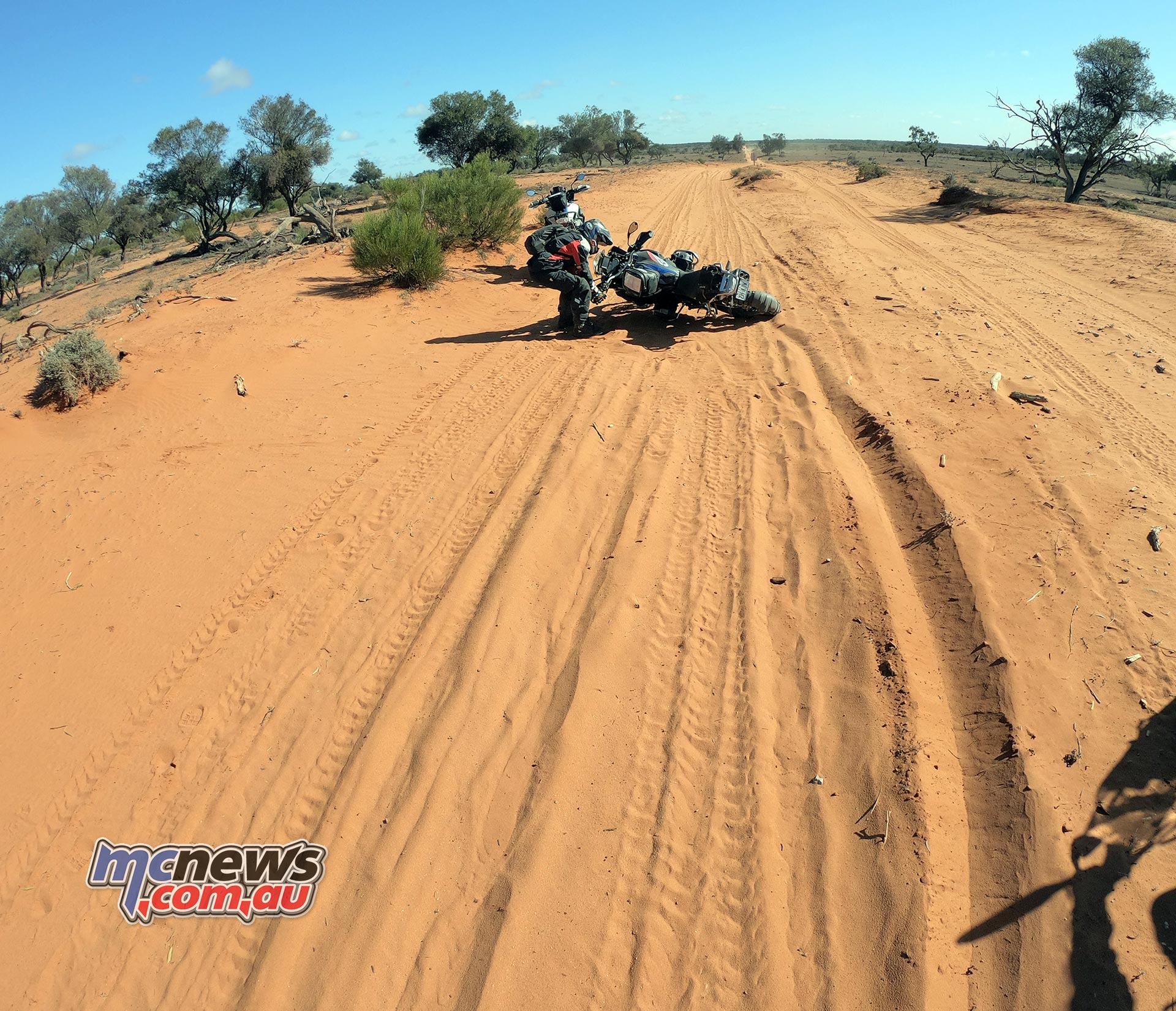
We were already getting into the proper outback on our basically all-dirt route via tracks generally less travelled, in fact, until we met up with our makeshift fuel stop I had not seen another soul outside of our own group all day. The fuel drop was required as only GS Adventures would have the 400+ km fuel range to make it through to camp safely, the rest of us had our steeds replenished with ten-litres each poured from jerry cans.
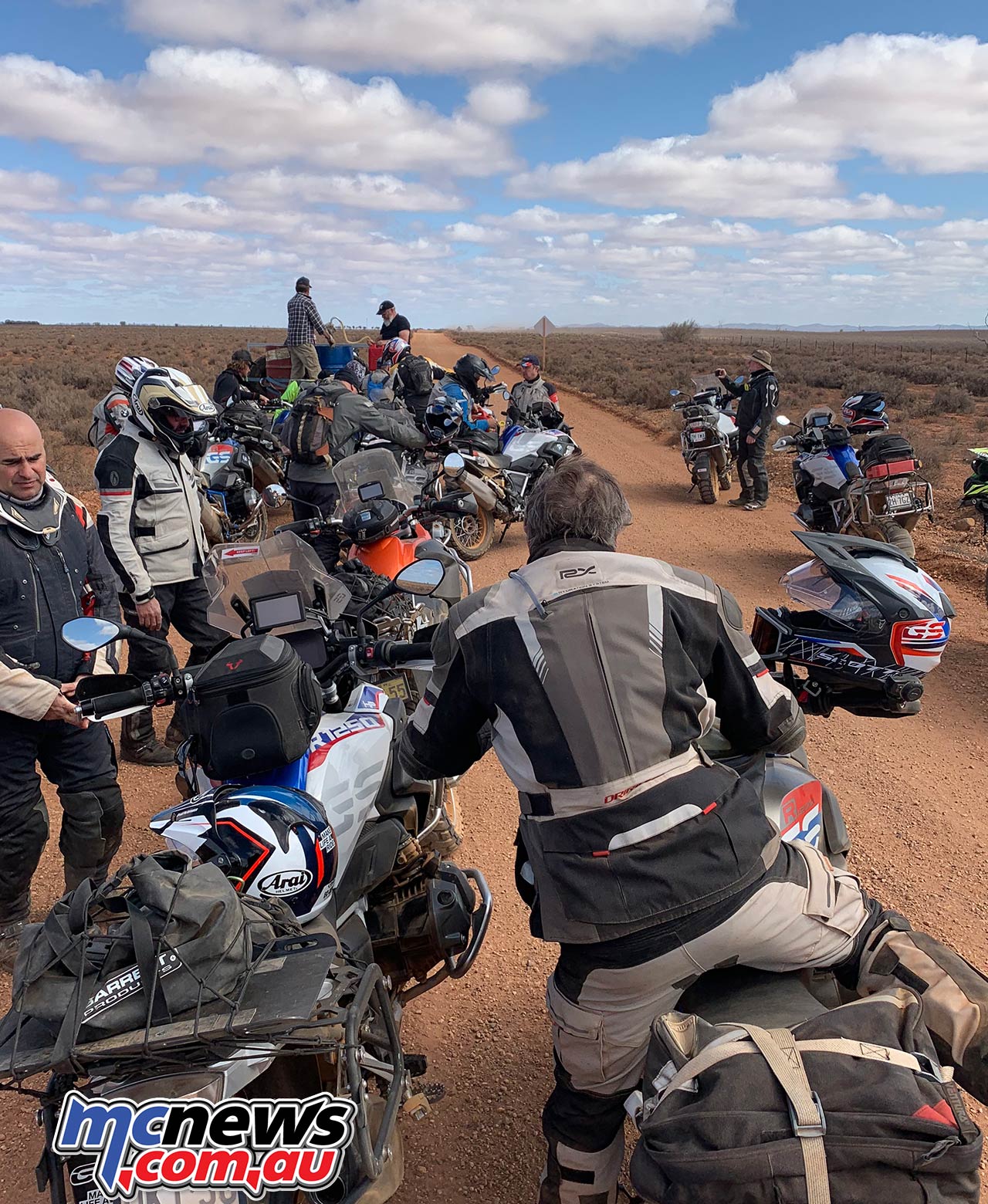
The remainder of the day was on wide and quite reasonable tracks, but they still had the odd patch of bull-dust to keep you on your toes.
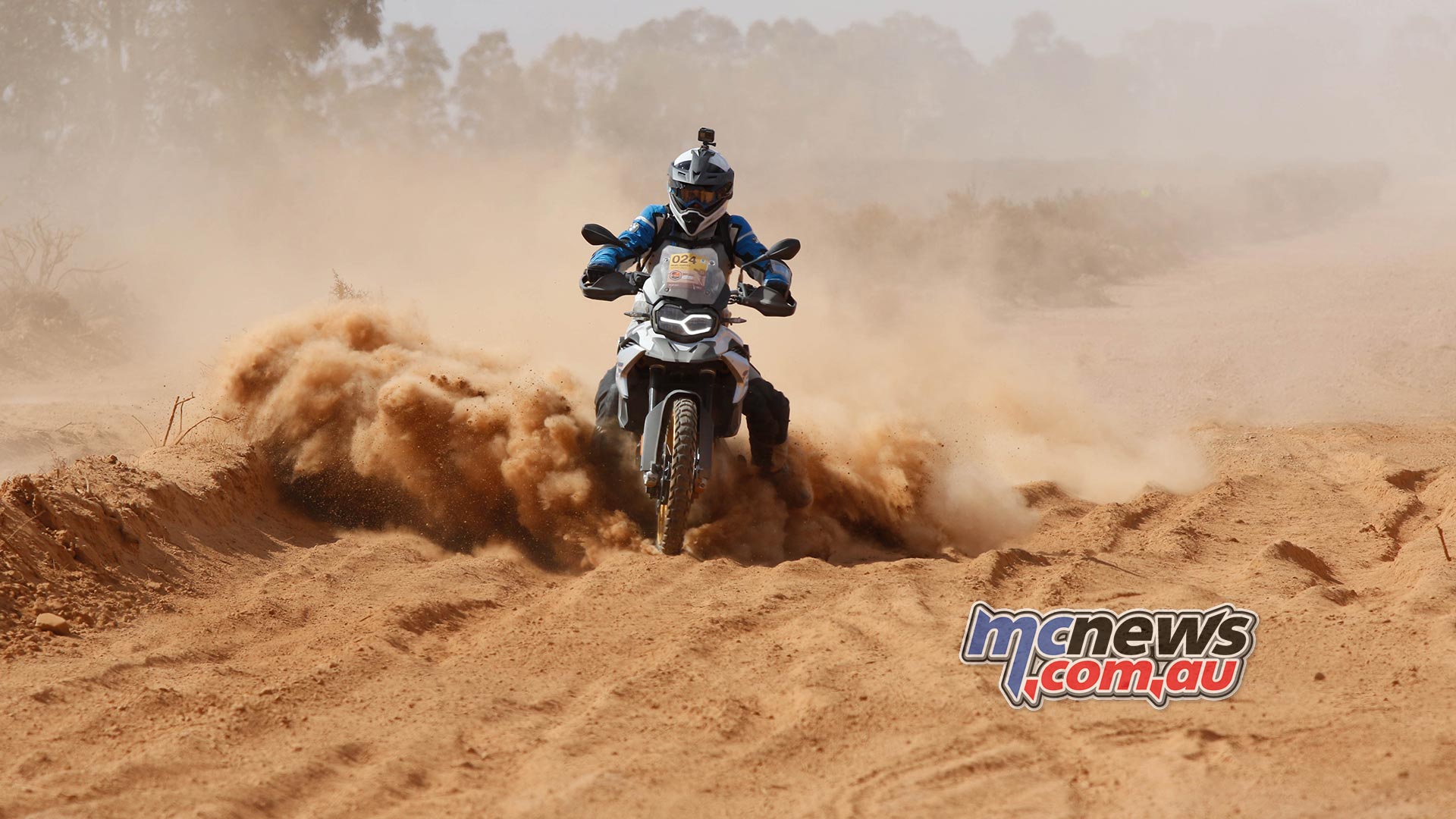
Our stop for the night was the Peterborough Caravan Park. Peterborough itself is a traditional old-style Australian country town. With a quite charming main street lined by pubs and buildings with balconies. The Indian Pacific train no longer stops in Peterborough so the lifeblood of the town these days relies primarily on grey nomad tourism.
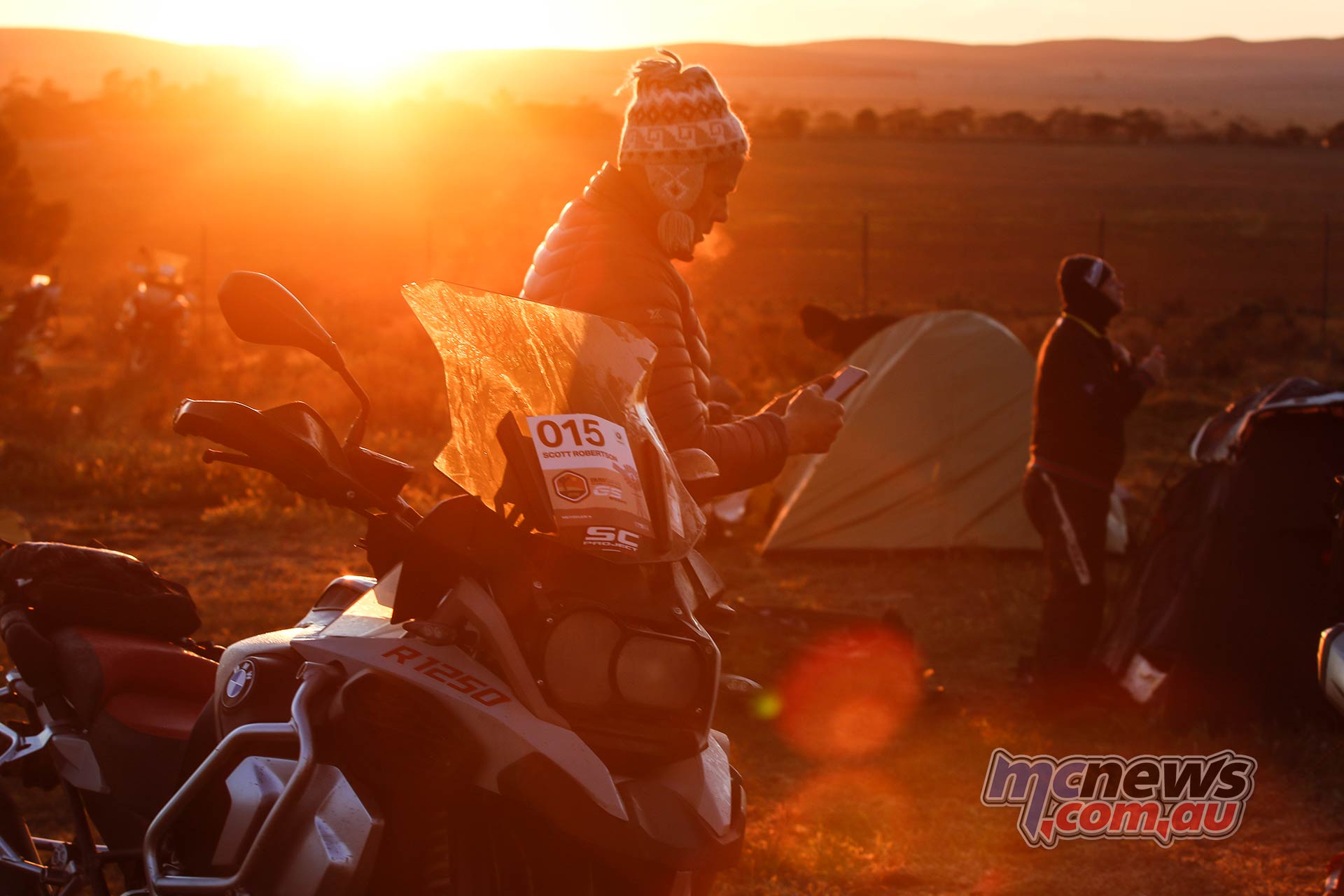
Tents and swags were unpacked before tales were told around the campfire while the local RSL served up dinner out of a makeshift canteen erected in the grounds.

GS Safari Enduro Day Two
Peterborough to Arkaroola – 459 km
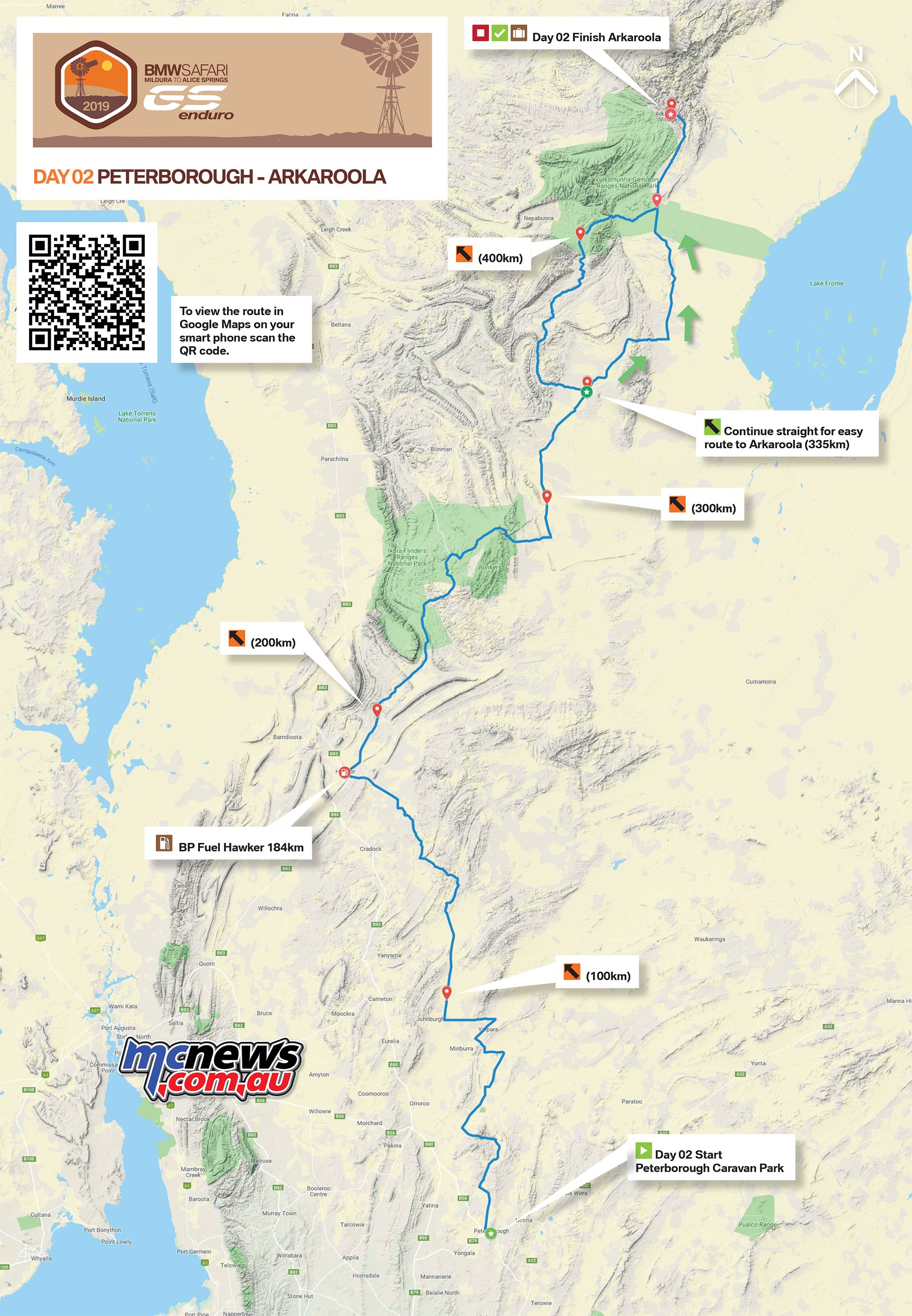
Peterborough to Arkaroola – 459 km
Riders woke up to another brisk morning as the smell of bacon and eggs prevaded the air as again the men and women from the local RSL prepared breakfast. Coffee was served for those that require caffeine to function of a morning, while camp was packed up ahead of another big day on the bikes.
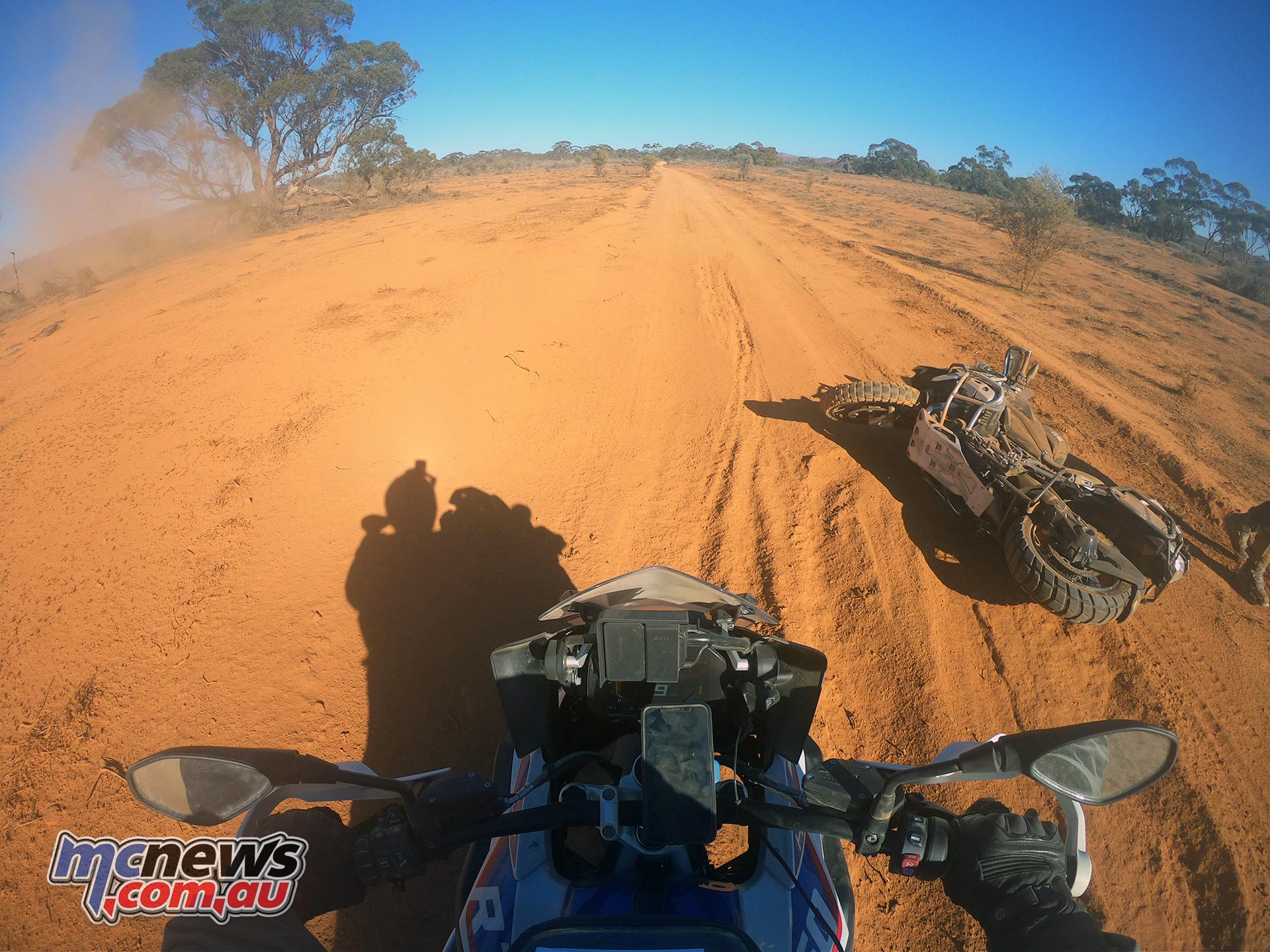
Heading out past Black Rock Conservation Area we then traversed a series of twisty tracks that criss-crossed private land holdings. It felt like I opened and shut about fifty gates, which turned out to be good stretching practice as I swung a leg over the R 1250 GS Rallye X each time.
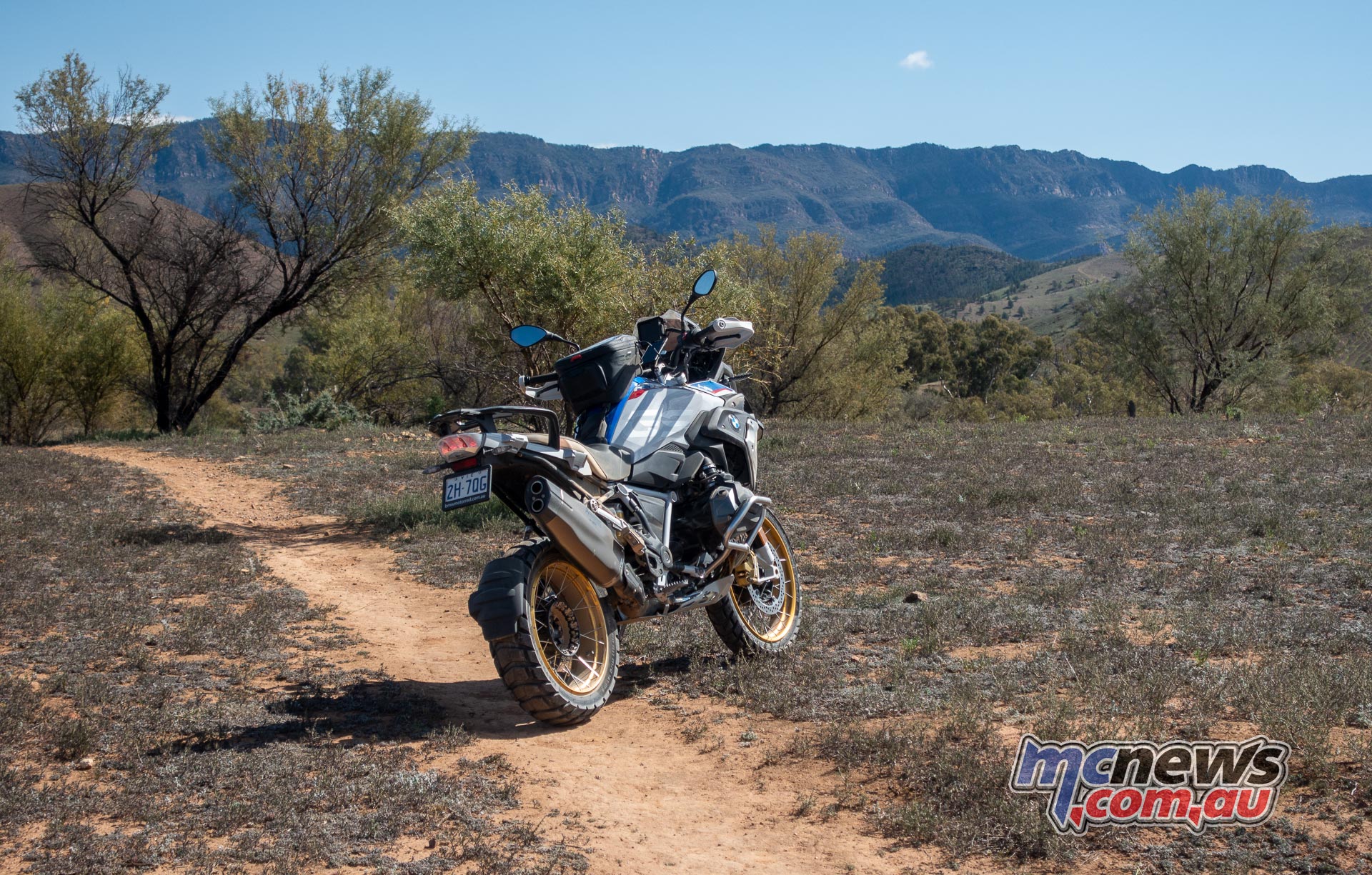
Lunch and fuel was at Hawker, a town with a permanent residence of around 350, but frequented by many travellers as they make their way up into the Flinders Ranges.
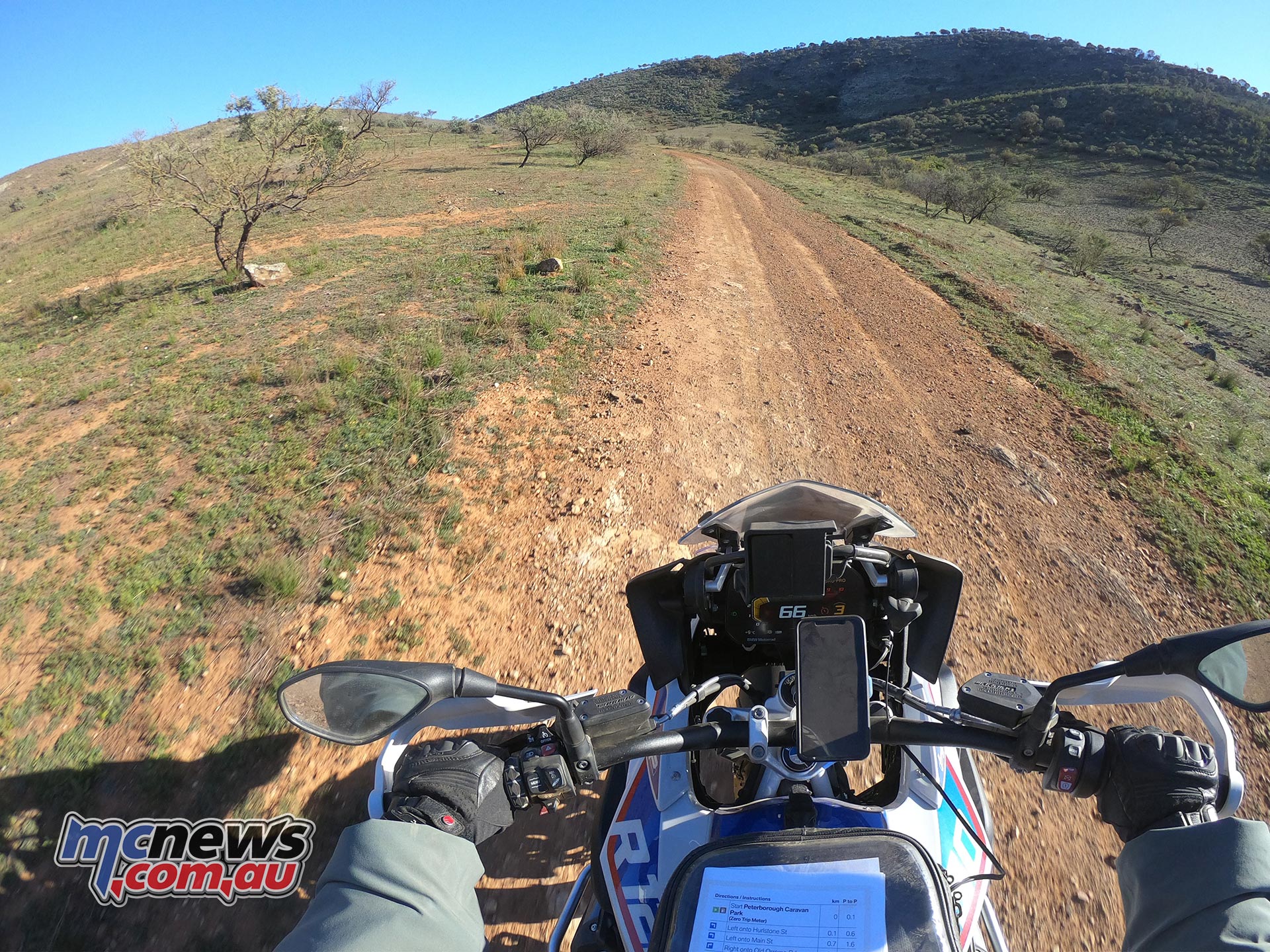
The terrain heading in and out of Hawker is rugged and rocky, but remarkably this 140-year-old town is only just over an hour from where the Indian Ocean juts into the warm embrace of Spencer Gulf.
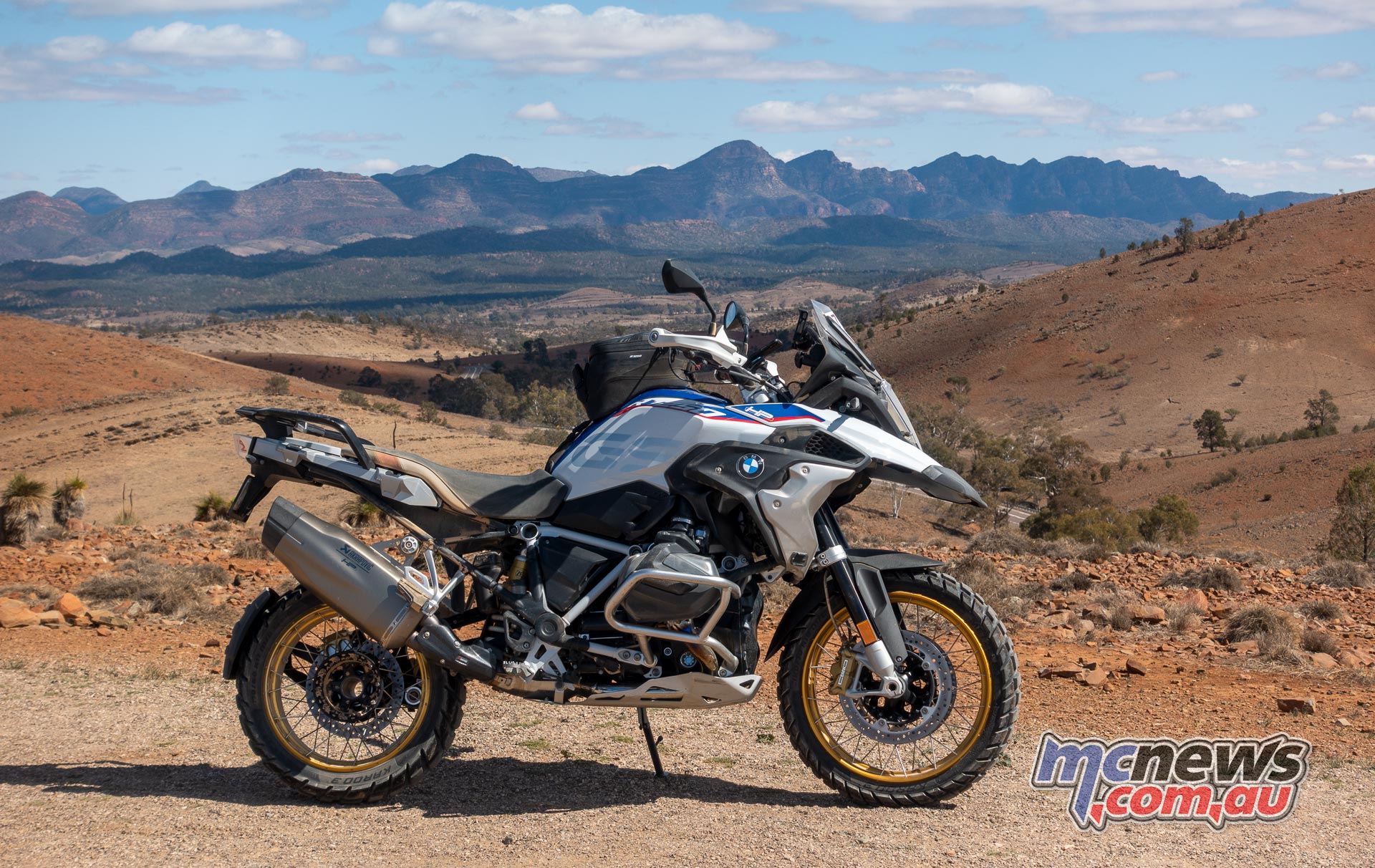
Heading north after lunch saw us bomb along a quite enjoyable few kilometres of winding bitumen. ESA into Dynamic and ride mode ‘Sport’, but a little restraint required not to make short work of the rear Metzeler Karoo III hoop.
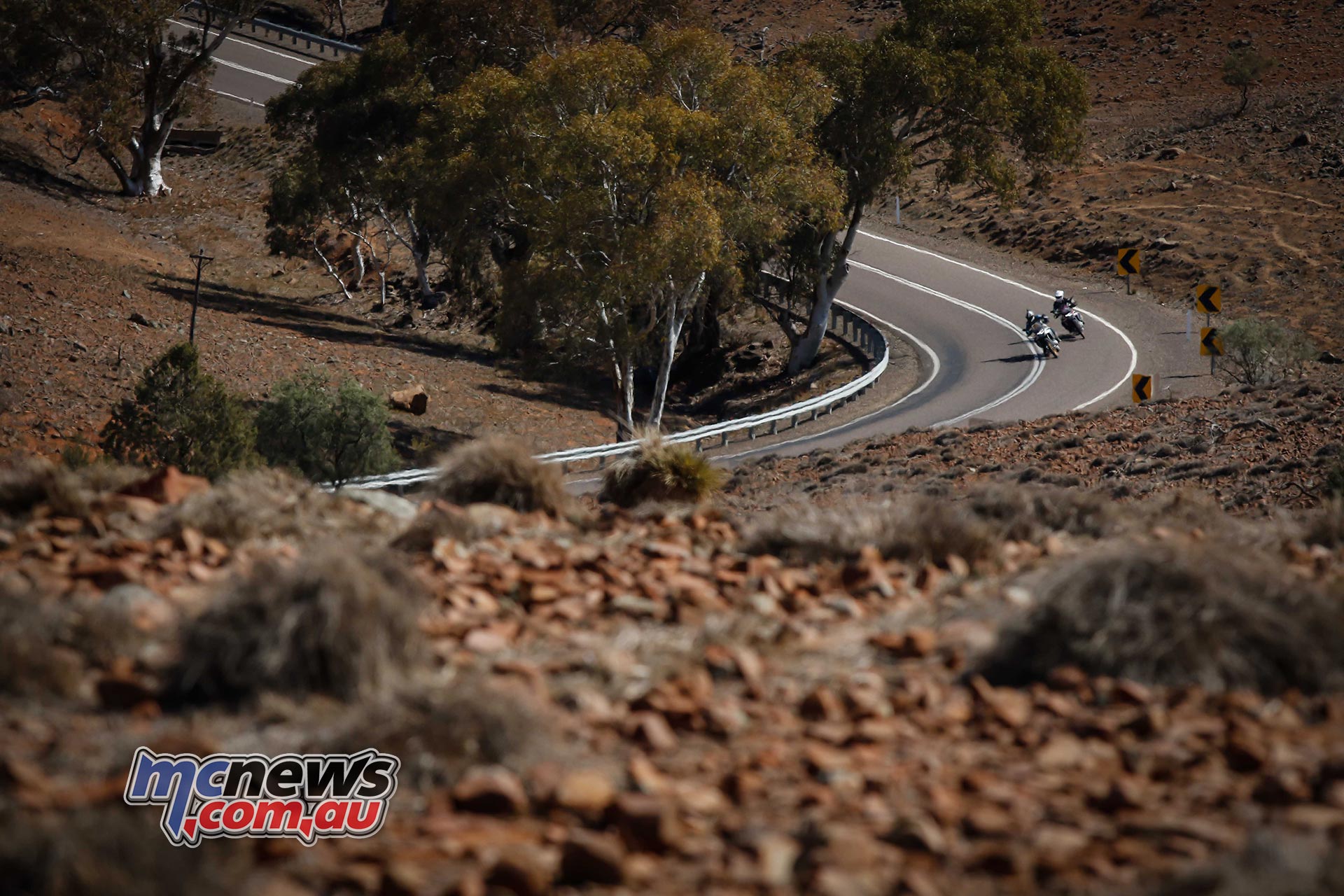
Still it was nice for a moment to flow along a lovely bit of tarmac with the edge of the Flinders Ranges a stunning backdrop to our west.
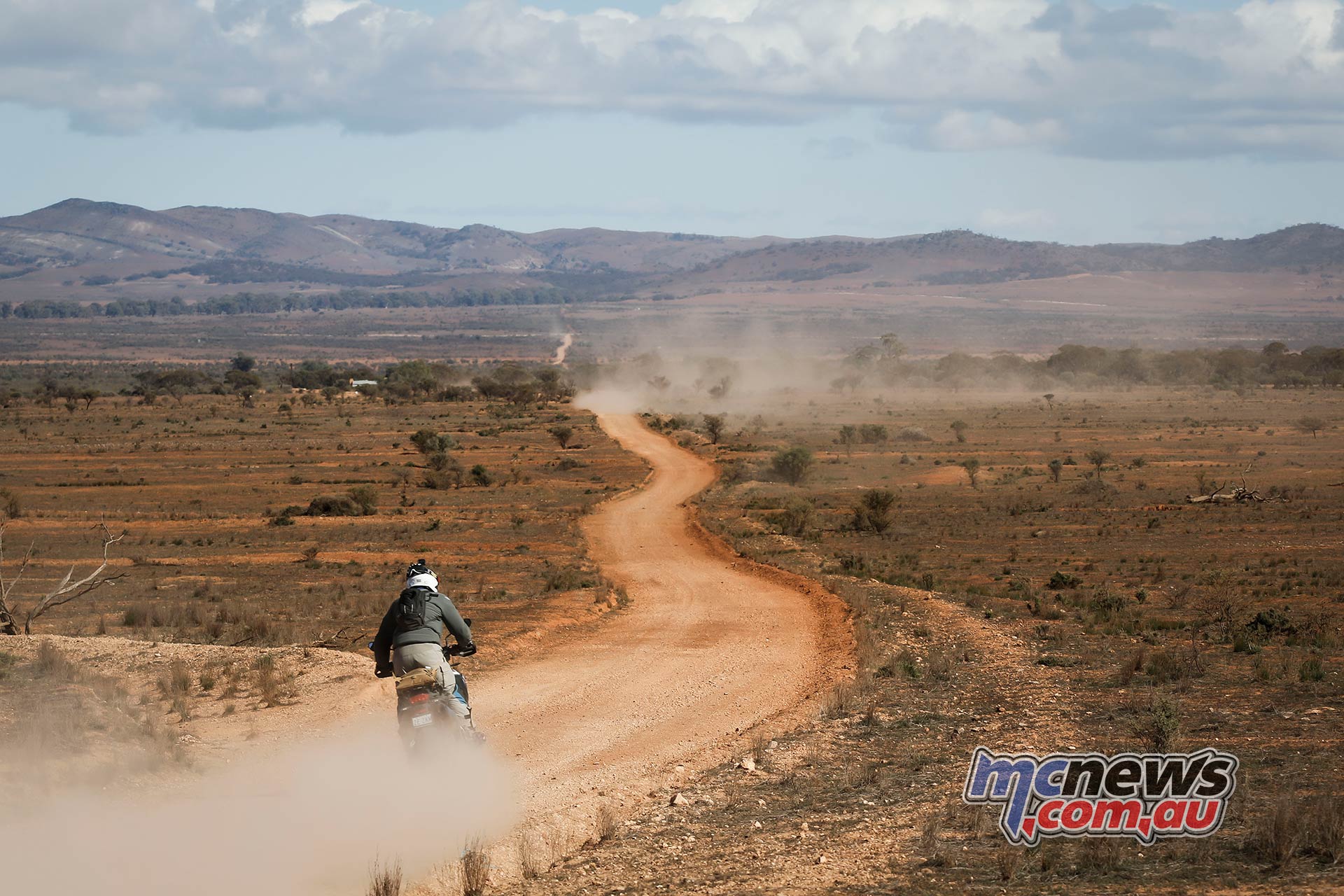
We passed Wilpena Pound but instead of heading towards Blinman we turned west on to tracks that led us to Wirrealpa Rd.
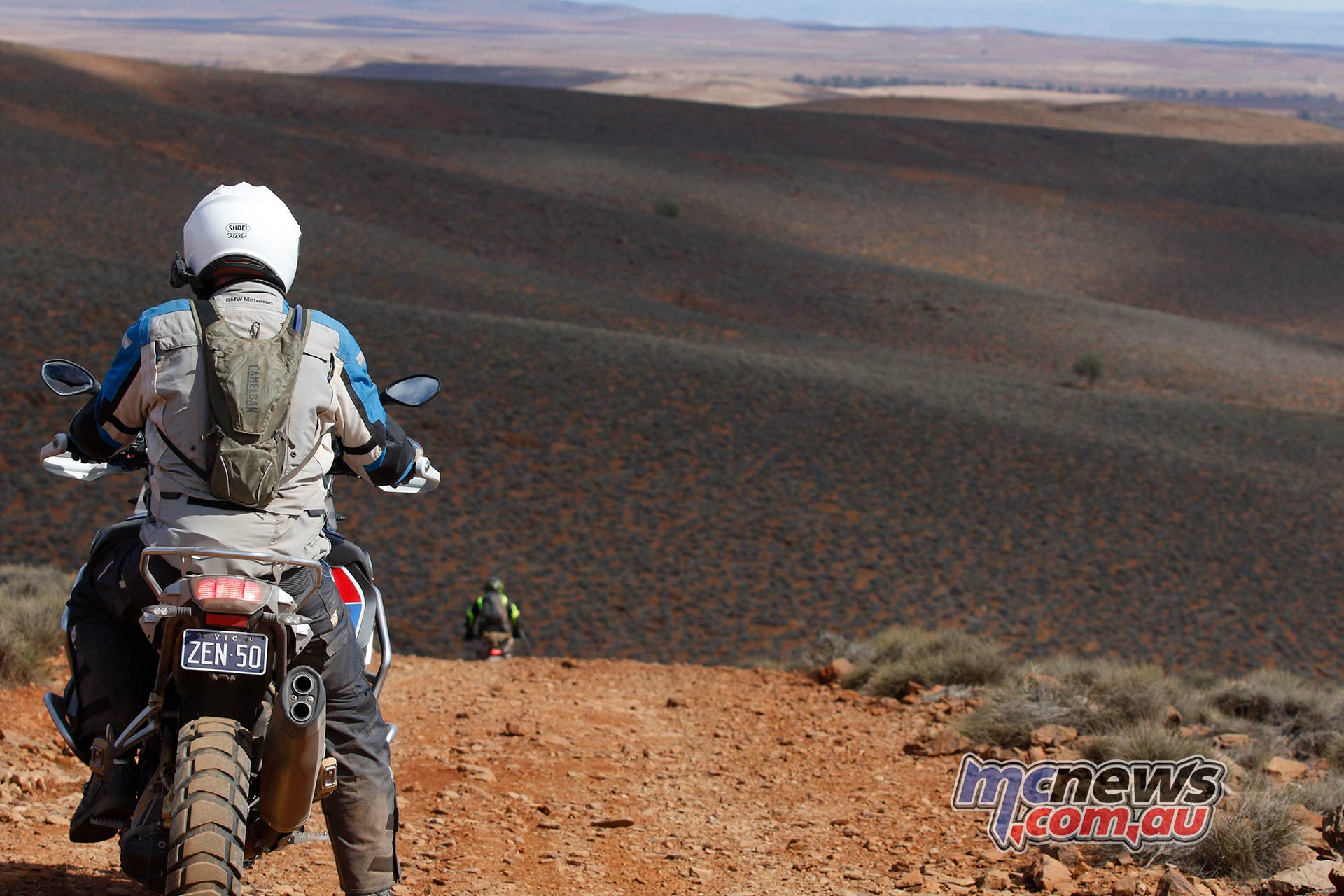
This was easy enough going but then later in the day we deviated in to Nantawarrina Aboriginal territory. These were some tight and at times quite technical trails before joining the main tracks towards Arkaroola.
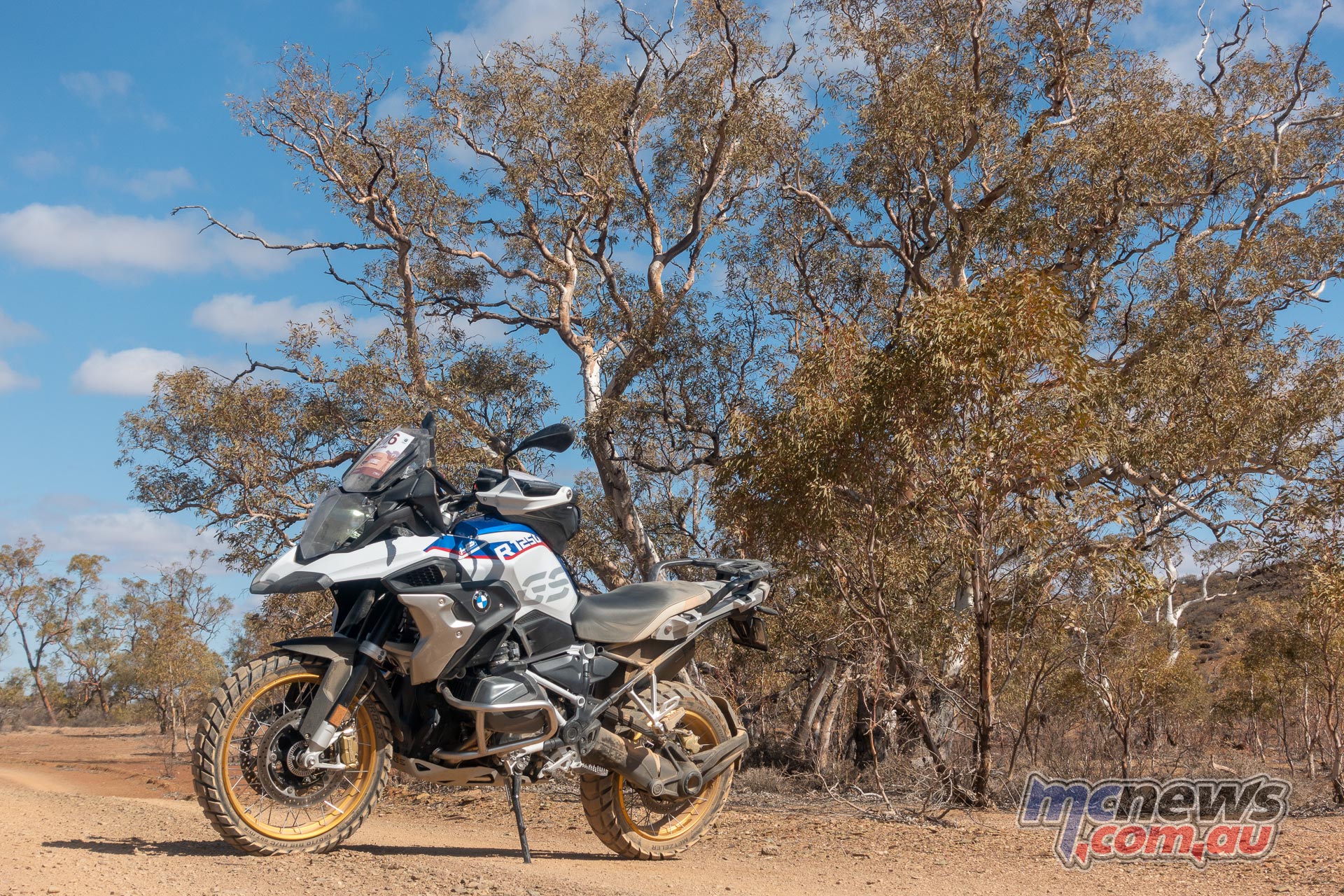
The terrain through Nantawarrina would be truly something incredible to behold after any major rains. The downside would be though that the tracks would also become incredibly difficult and in any truly major downpours would be impassable.
There were a few spots along here though where I wouldn’t have minded being stranded, as long as I had a swag on the back, a bit of tucker and a cask of chateau de cardboard, I would have been well set. In some of my earlier adventures throughout Western Australia I have been known to blow up the empty wine bladder from the cask and used it as a pillow of an evening! #multitasking #class
Instead we were set for proper beds at Arkaroola, a modern oasis suddenly appeared in the desert complete with a large bar….well all but one of us anyway…
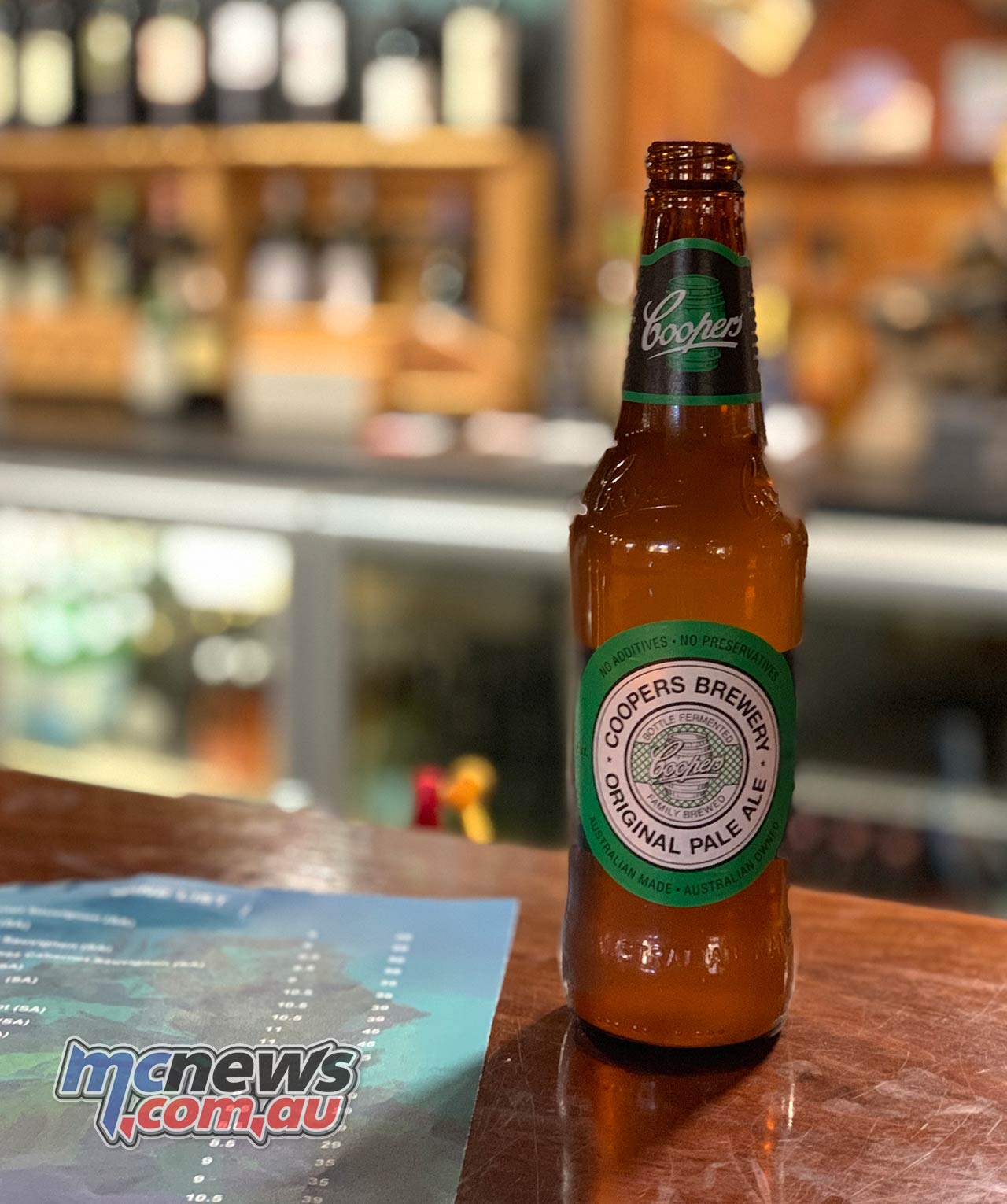
One poor fella had suffered a broken ankle, along with a few other injuries in an afternoon crash and was being prepared for a medical evacuation. Royal Flying Doctor Service is your only hope of getting to a hospital out here, and even then it can take 12-24 hours for them to get to you…
GS Safari Enduro Day Three
Arkaroola Loop – 122 km
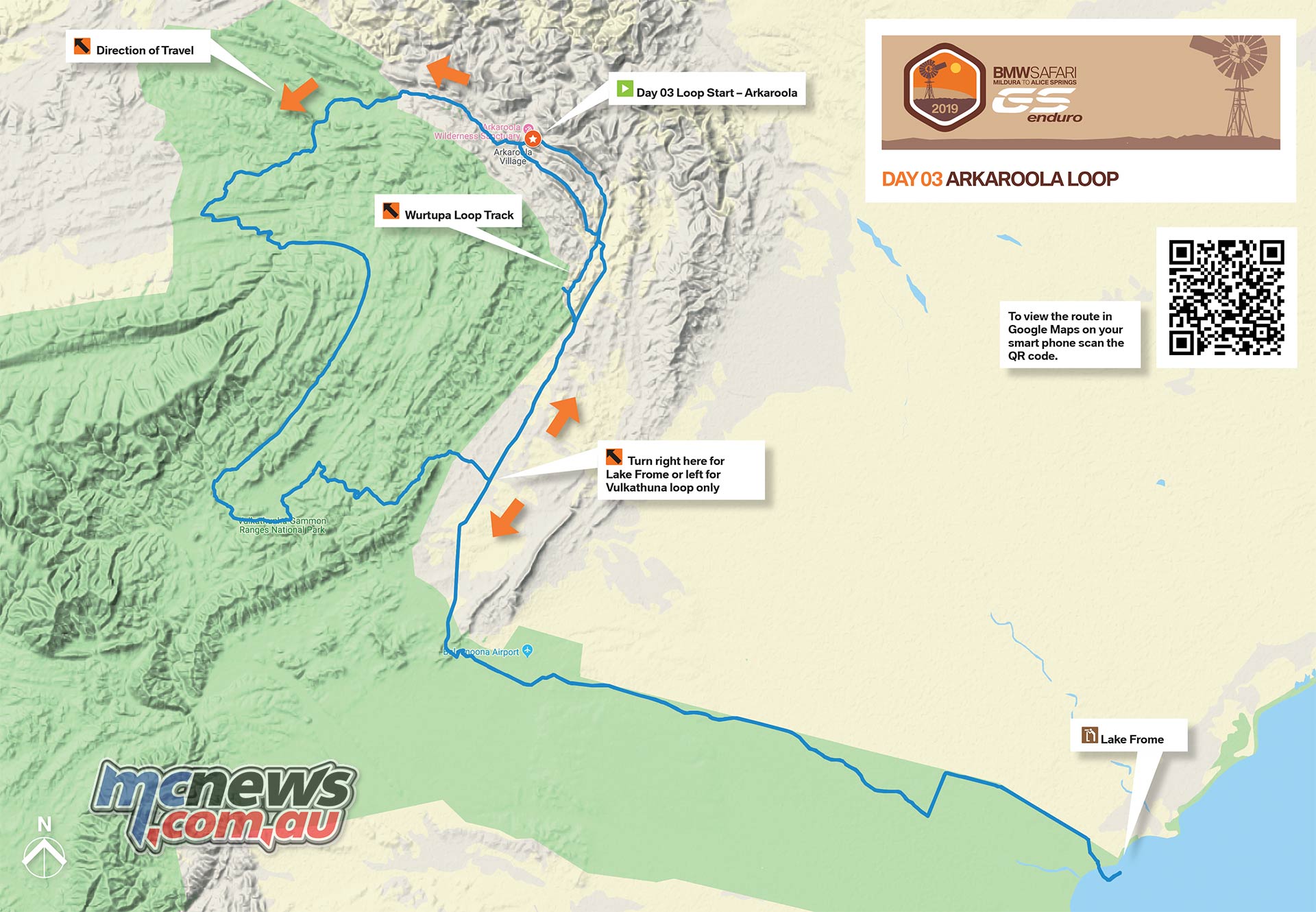
Arkaroola Loop Day – 122 km
GS Safari Enduro riders had the option of either using this as a rest day, or heading out to explore some tracks in the Vulkathunha-Gammon Ranges. It was nice not to have break camp at the crack of dawn.
How were the the rivulets and landscape around Arkaroola created..? Well according to Adnyamathanha dreamtime stories, a mythical giant creature named Arkaroo drank the nearby Lake Frome dry before then proceeding to climb up into the mountains before then pissing it all out, thereby creating Arkaroola Creek…. Don’t know exactly what herbs were growing in the area when that was dreamed up…
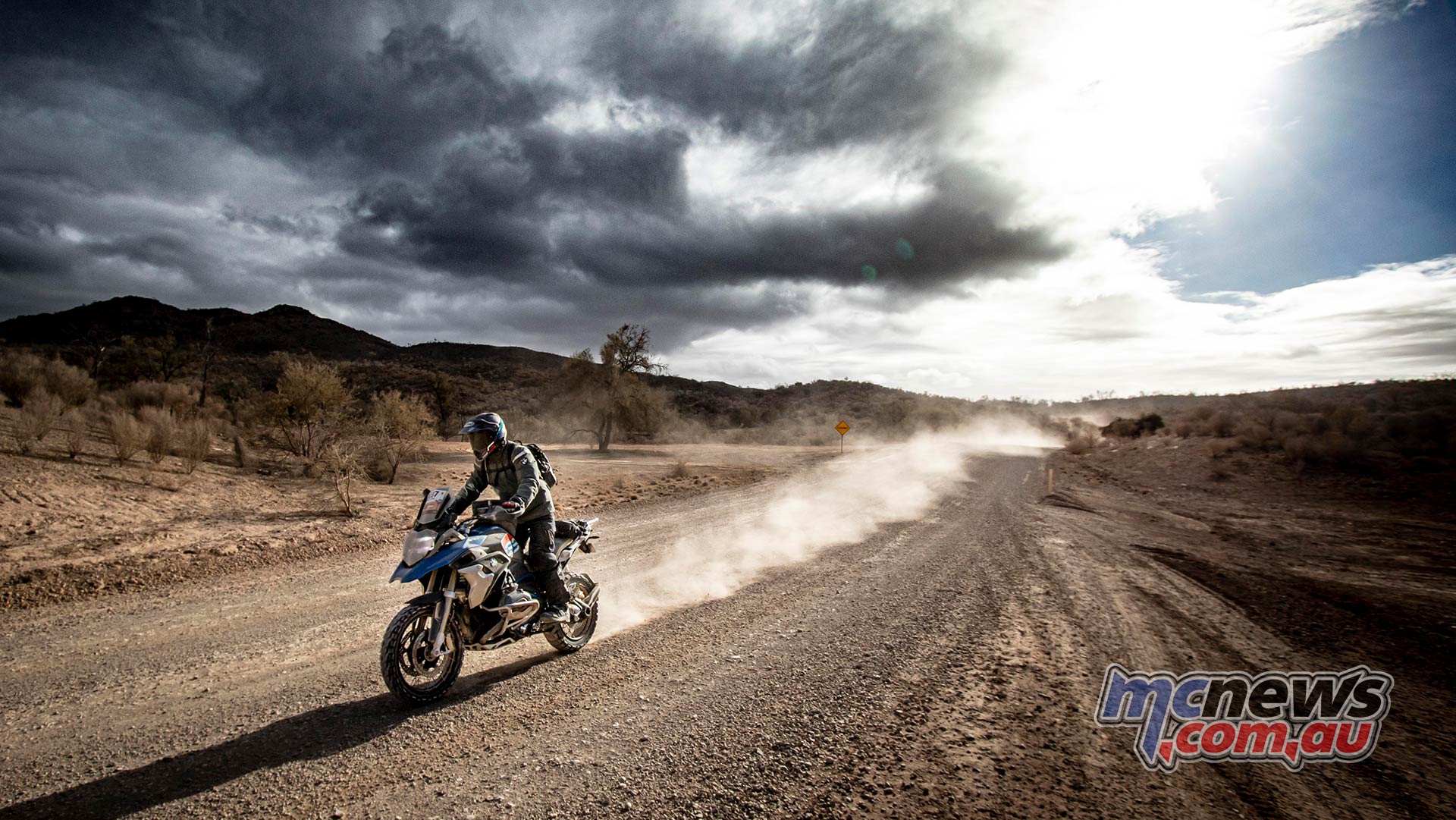
The area was first settled by Europeans as a mining area in 1860 before major drought saw the settlers pull up stumps in 1863. It was not until the early 1900s that white settlement started again and the catalyst for that happening was the discovery of rich deposits of rubies and sapphires. Uranium was then discovered in the area by Douglas Mawson, a great man more well known for his exploits in Antarctica than in the outback.
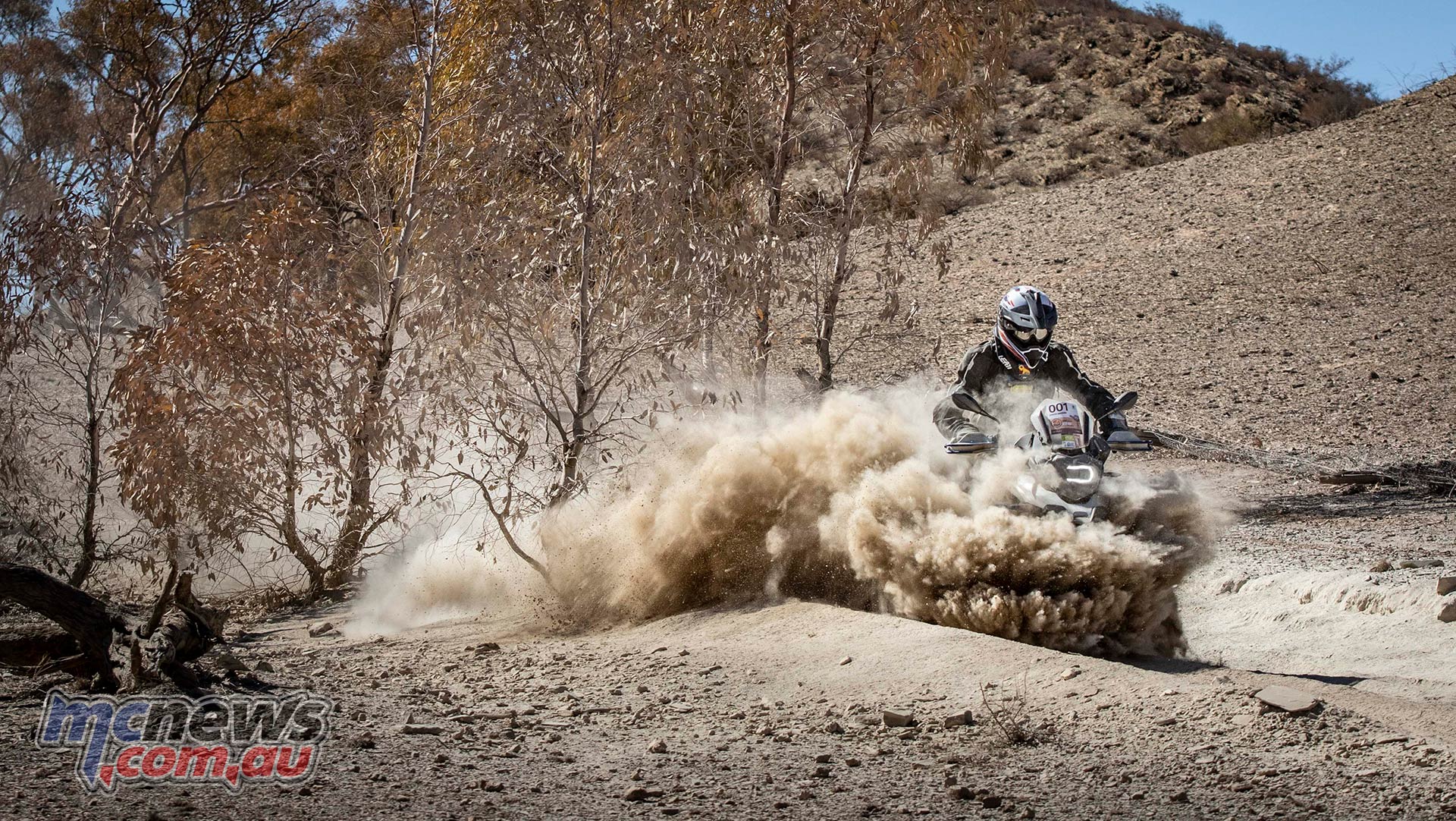
Uranium was almost the death of the Arkaroola Wilderness Sanctuary that had been developed in the area by geologist Reg Sprigg in 1968. Sprigg had purchased a 610 square-kilometre lease on the land but it was not until 2011 that this area was well and truly protected from mining. The South Australian government enacted special purpose legislation prohibiting mining, mining exploration and grazing amidst the Arkaroola ranges. The South Australian populace had been up in arms after a mining company had dumped radioactive waste in the region after exploratory drilling which forced the government to act.
While the miners are not welcome, motorcyclists and four-wheel-drive enthusiasts certainly are and Arkaroola has a network of tracks that can test just about anyone’s mettle.
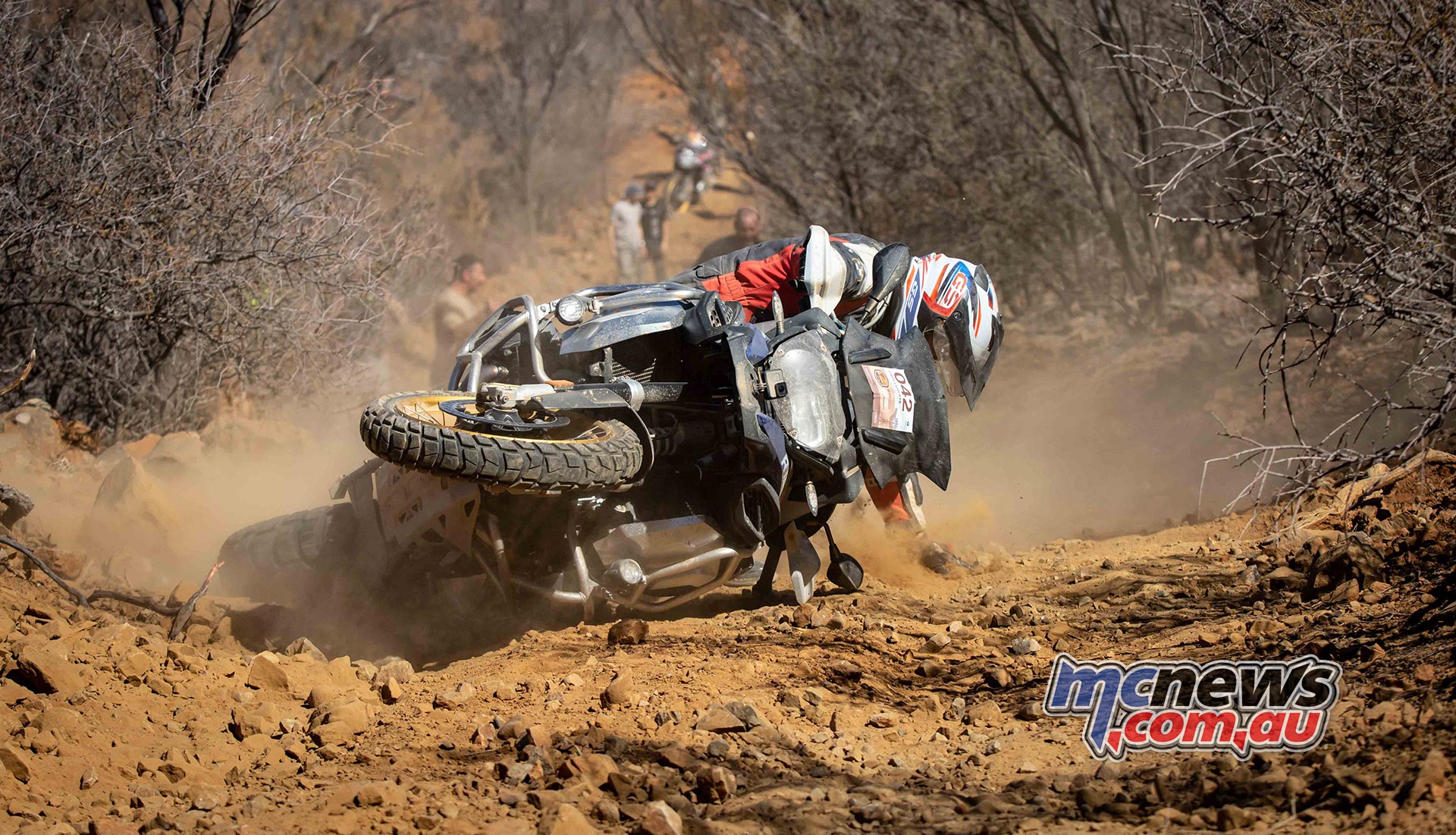
There were a few riders that wished they had taken the option of sitting the day out as the dry conditions caused some of the planned routes to be quite a bit more treacherous than expected. There were also countless punctures from the sharp and jagged rocks.
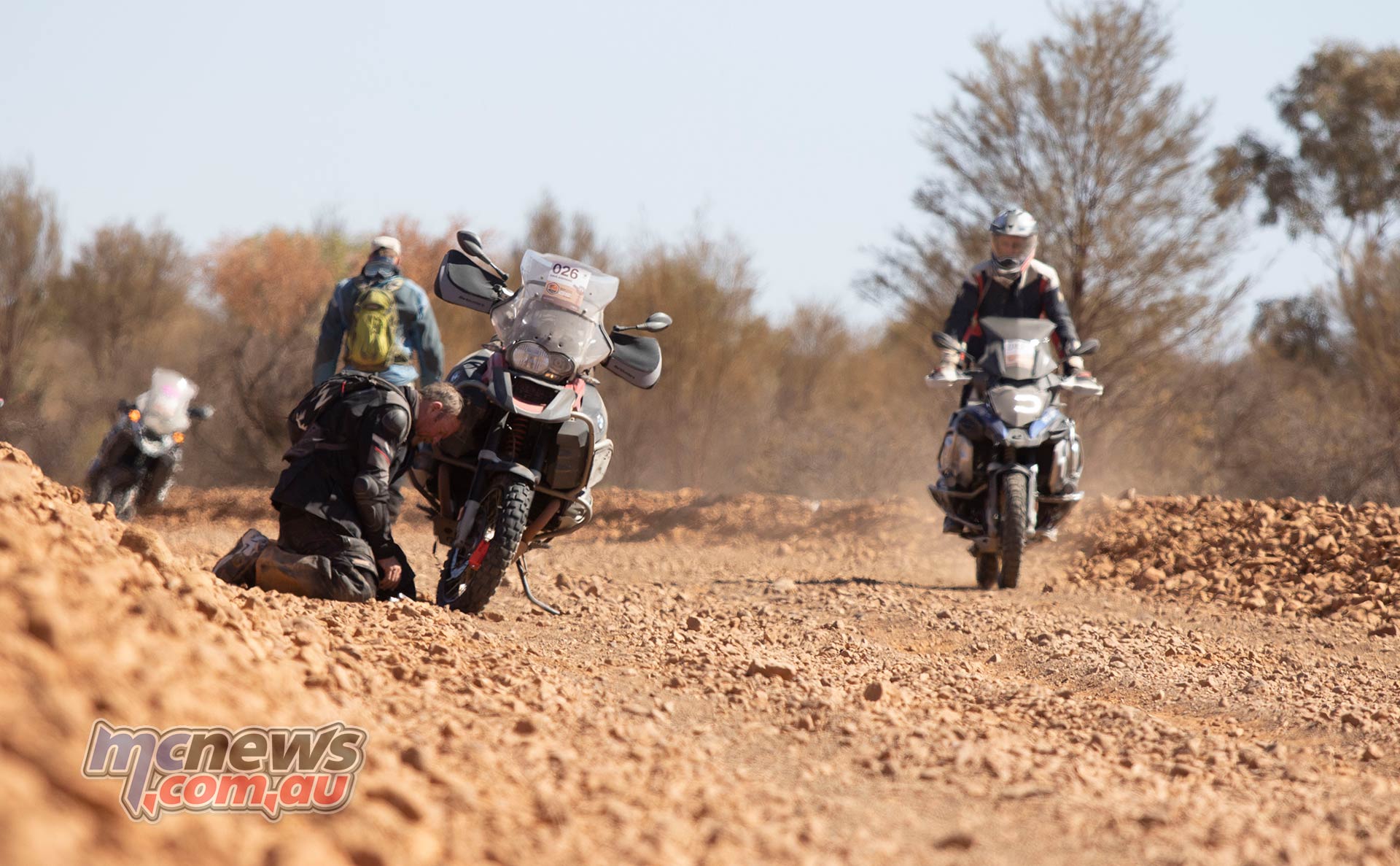
Still, as a testament to the communal effort, everyone survived the day to work up a hearty thirst for the nights BBQ dinner.
GS Safari Enduro Day Four
Arkaroola to William Creek – 450km
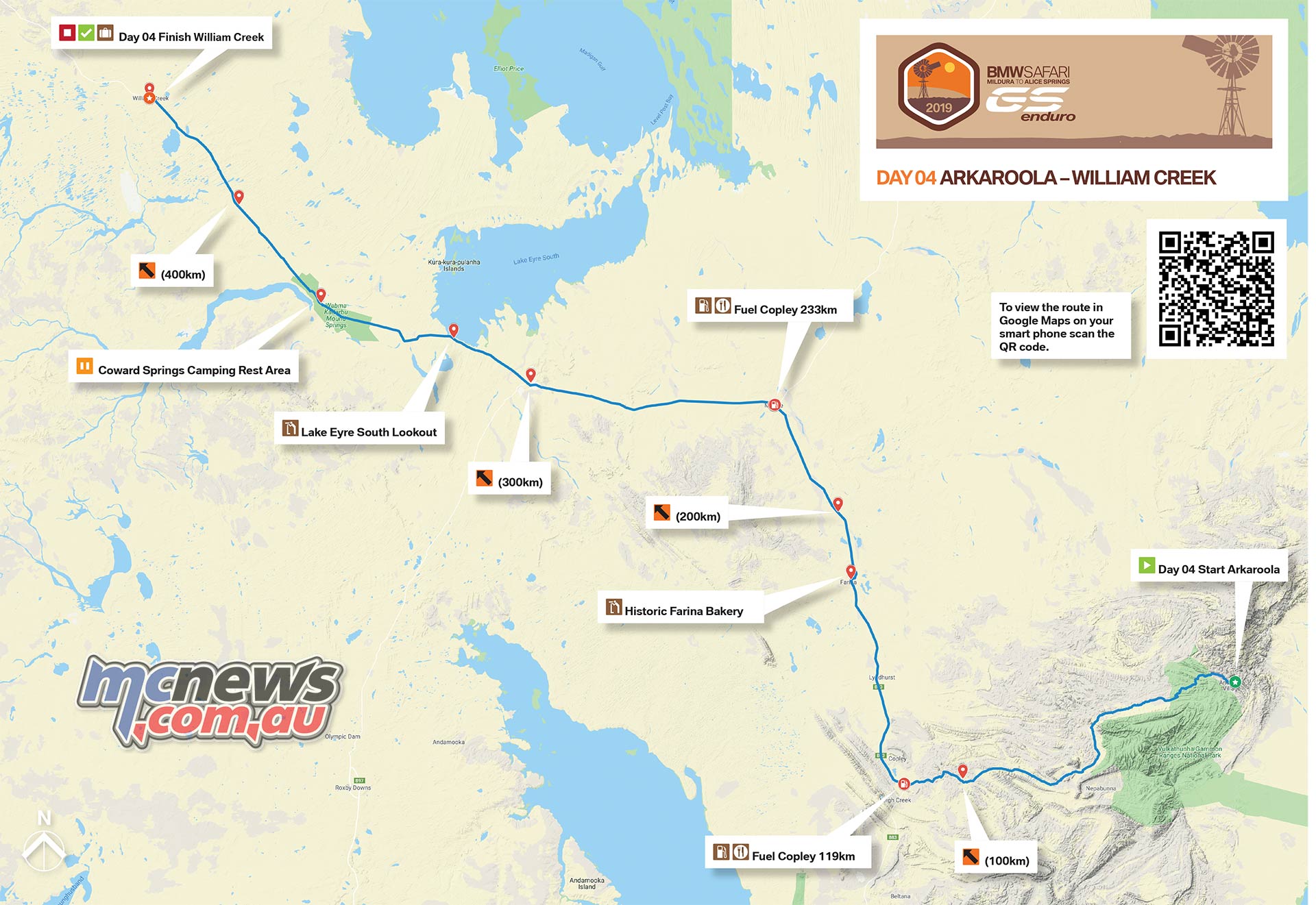
Arkaroola to William Creek – 450km
A generous breakfast from the Arkaroola Village kitchen had the riders well prepared for two options, a testing back exit from Arkaroola, or a run back out from Arkaroola the way we had come in.
Bravely, most riders plumped for the harder option, they had come to to put the ‘Enduro’ in GS Safari after all and despite the difficulty, many were really relishing the challenge and enjoying putting themselves and their machines to the test. I mean what better time to do it? On Safari you have medical and technical back-up, along with 80 or so helpers should you get in way too deep.
Thus some were more tired than others as we rolled into Copley for a pie and some fuel before what was perhaps the only real mundane part of the experience over the first few days. A 100km or so of bitumen took us into Marree and the terrain was starting to become flatter as we progressed and left the ranges in the dust behind us.
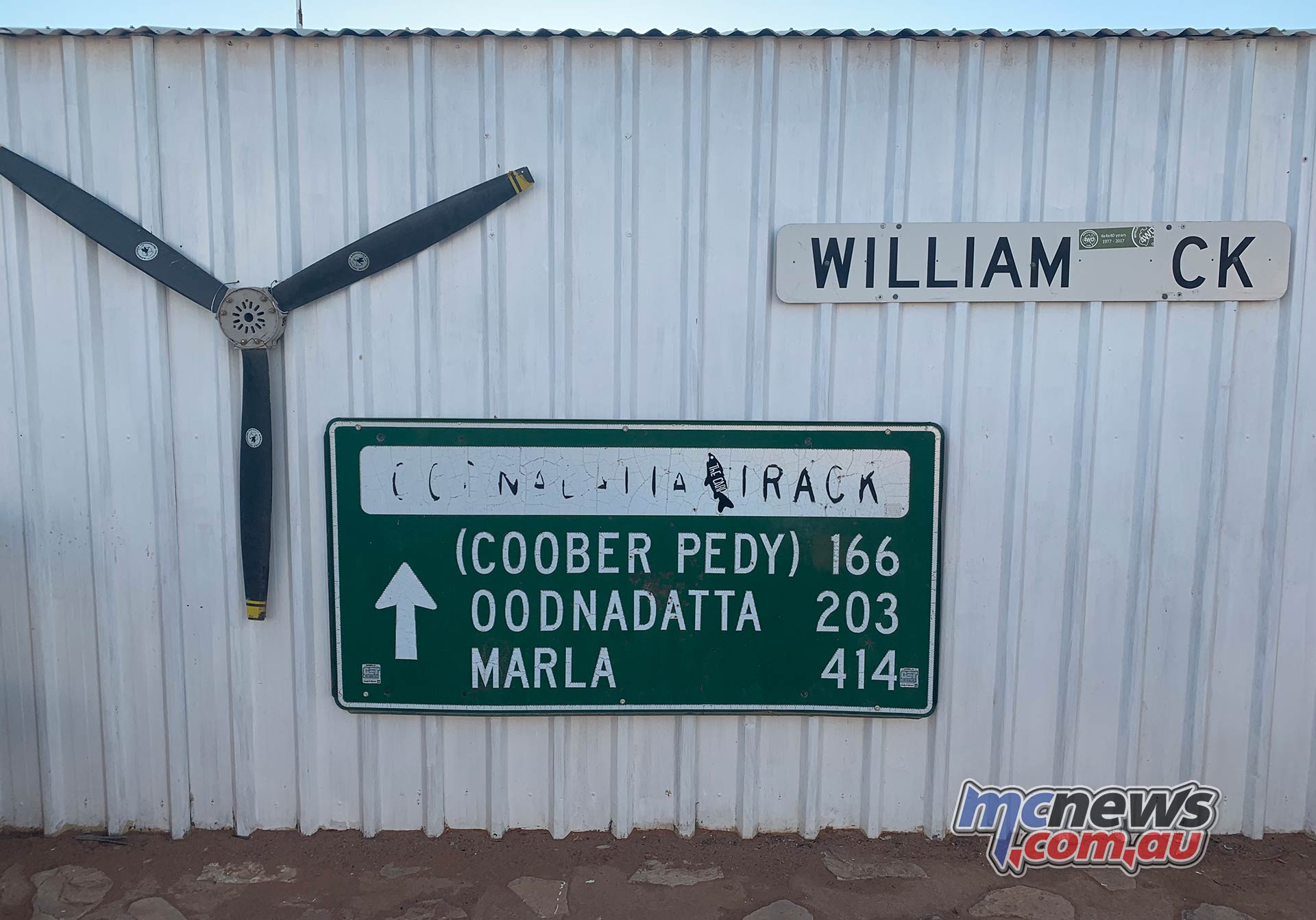
We then joined the Oodnadatta Track for an easy roll into William Creek for the night.
Accomodation here was primarily in shared dongers and the William Creek Hotel was hit hard by all and sundry.
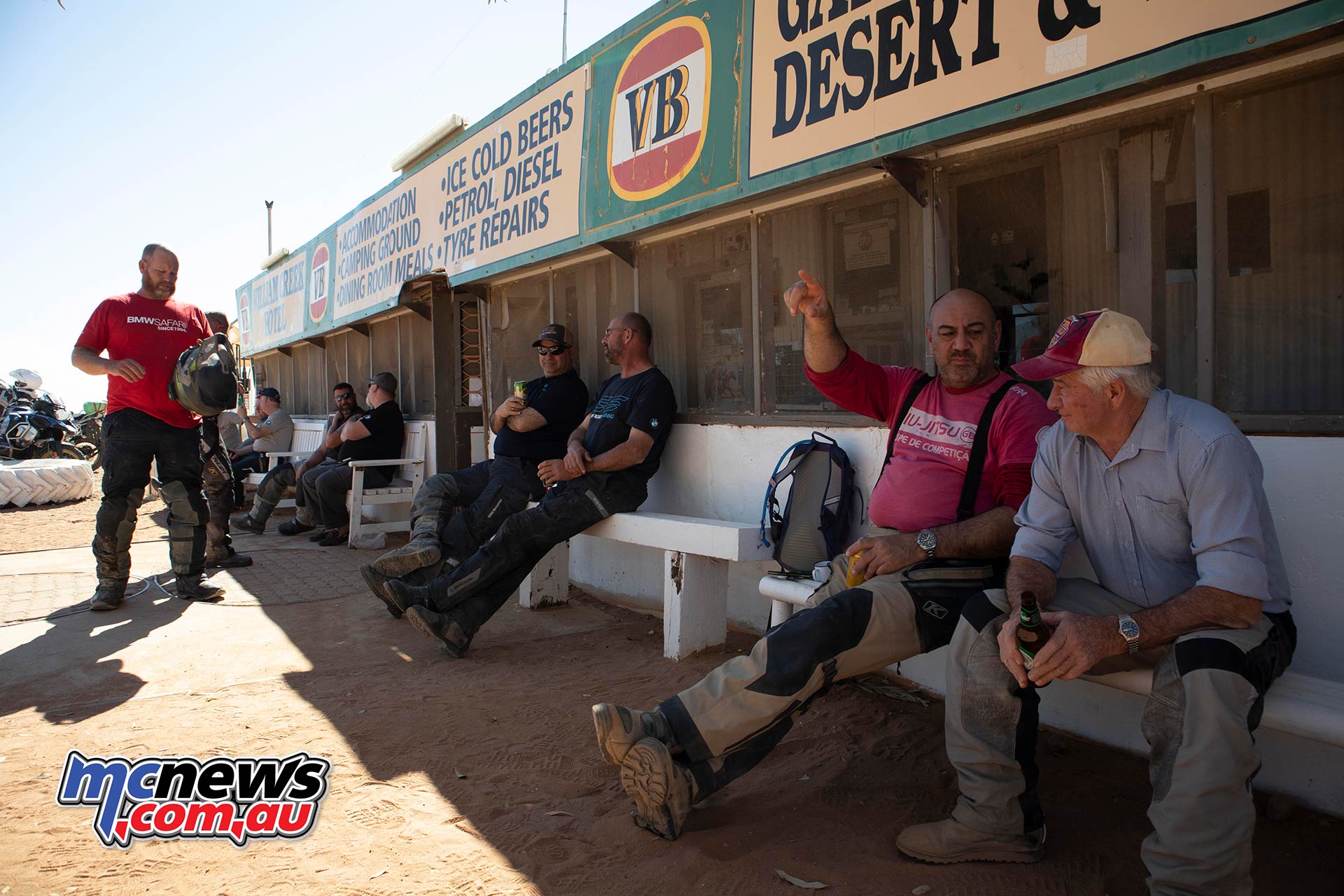
The biggest lamb shanks I have ever seen were served up for dinner and were washed down with many a beer.
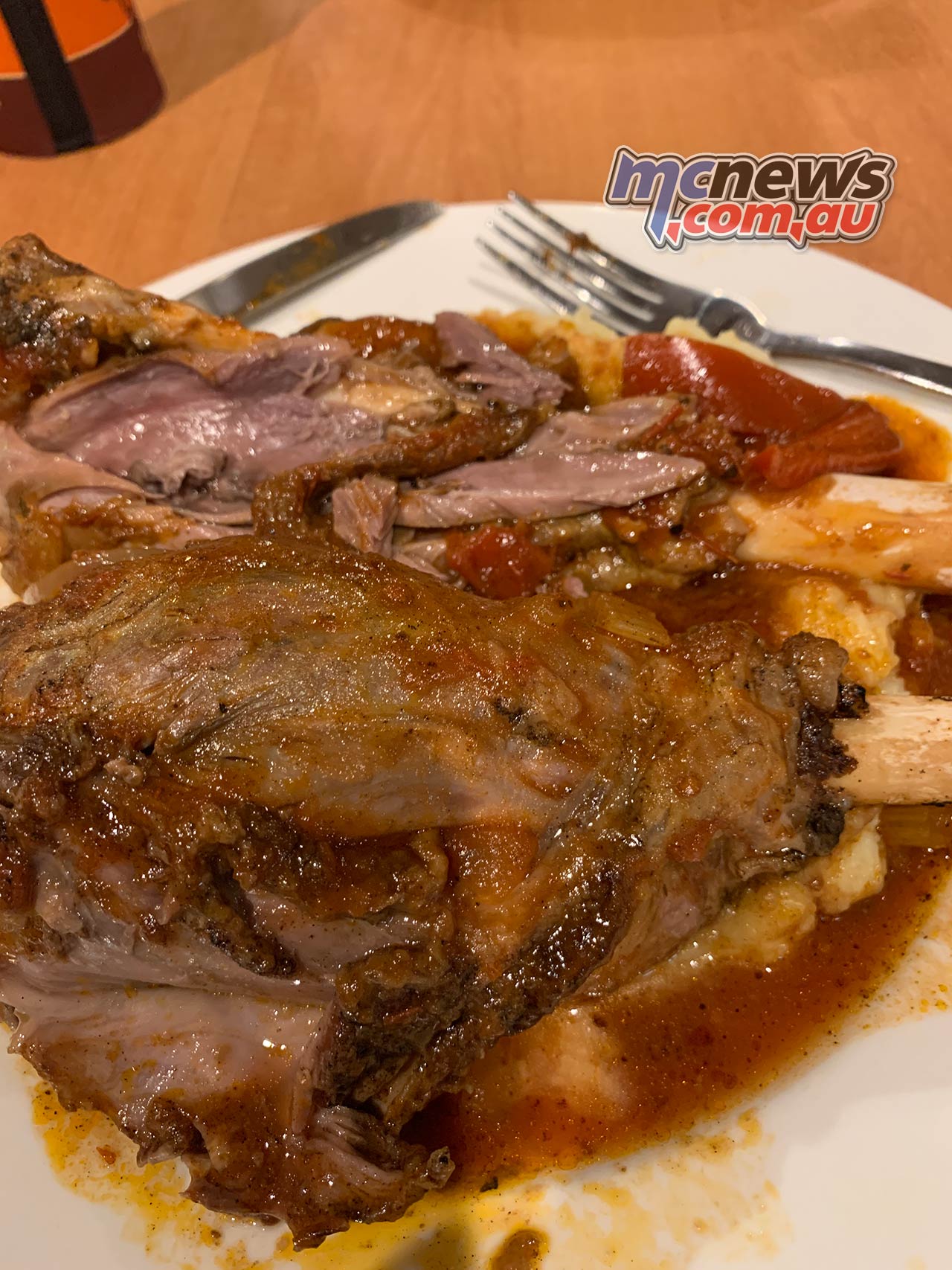
Everyone was in good spirits and I heard there might have been a few middle aged men that stripped off a few clothes and danced on the bar! Allegedly!
When it came for closing time more than a few of the GS Safari boys were not done. A hat was passed around to come up with enough cash to talk the two ladies behind the bar in to working late. The figure raised was, allegedly, over $500…. But what happens in the bush stays in the bush….Sometimes…. My silence can be bought…. LOL
GS Safari Enduro Day Five
William Creek to Mount Dare – 460 km
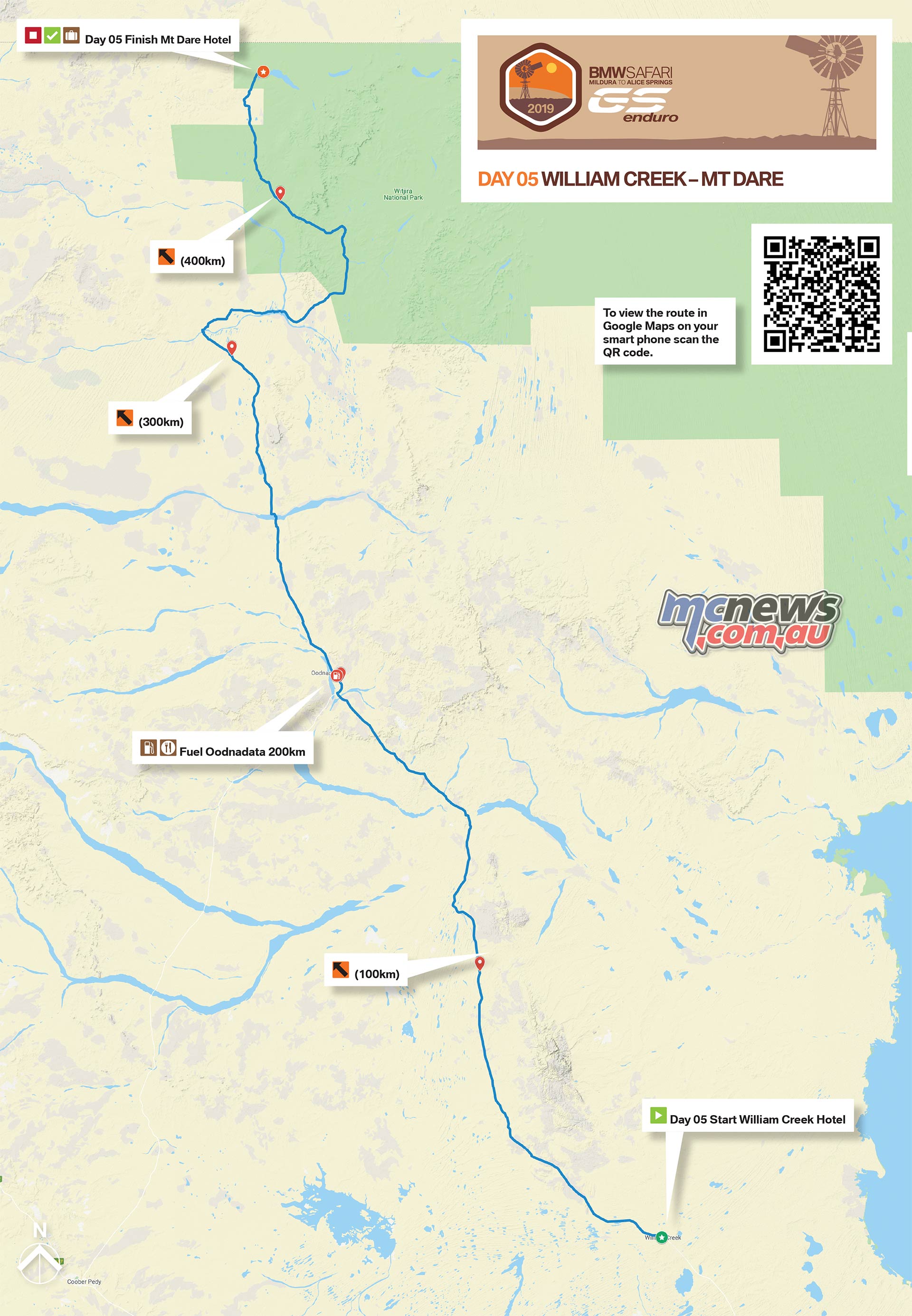
William Creek to Mount Dare – 460 km
The next morning we worked our way north on the Oodnadatta Track towards, funnily enough, Oodnadatta…
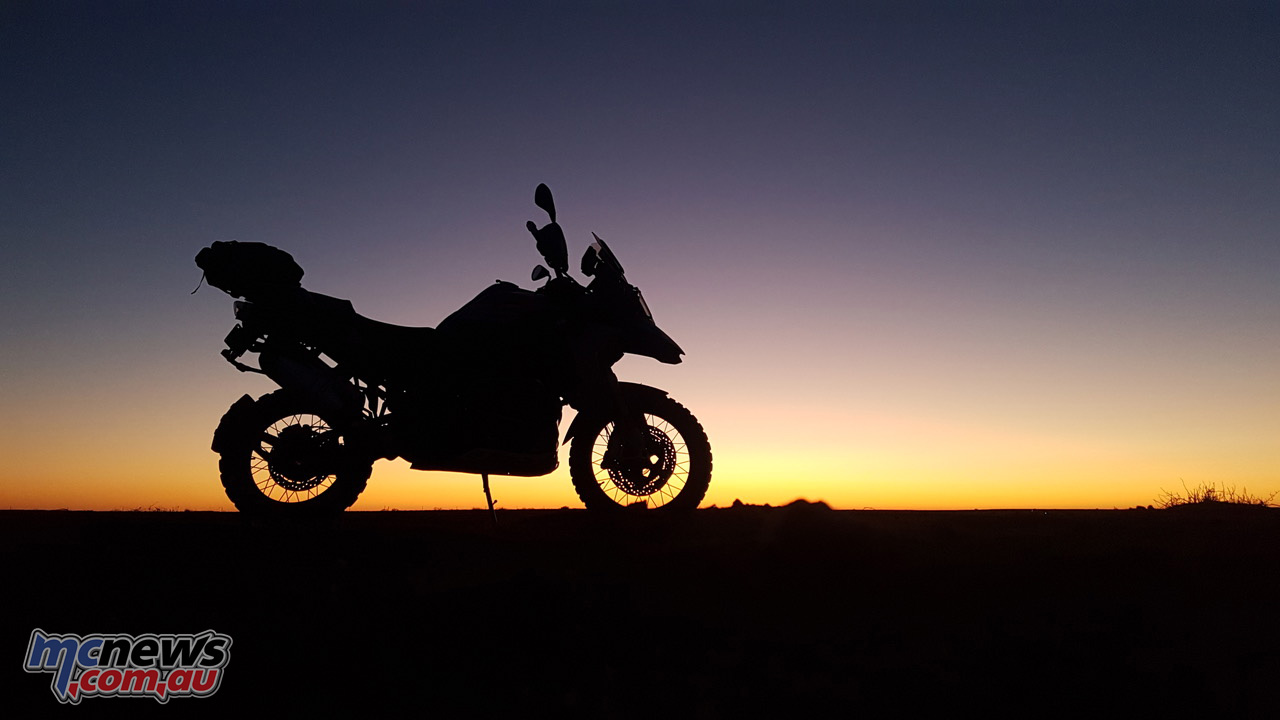
I have done this track a few times and mostly it has been really easy going, two-wheel drive car type easy going, but it was in a shitful state the day we traversed it.
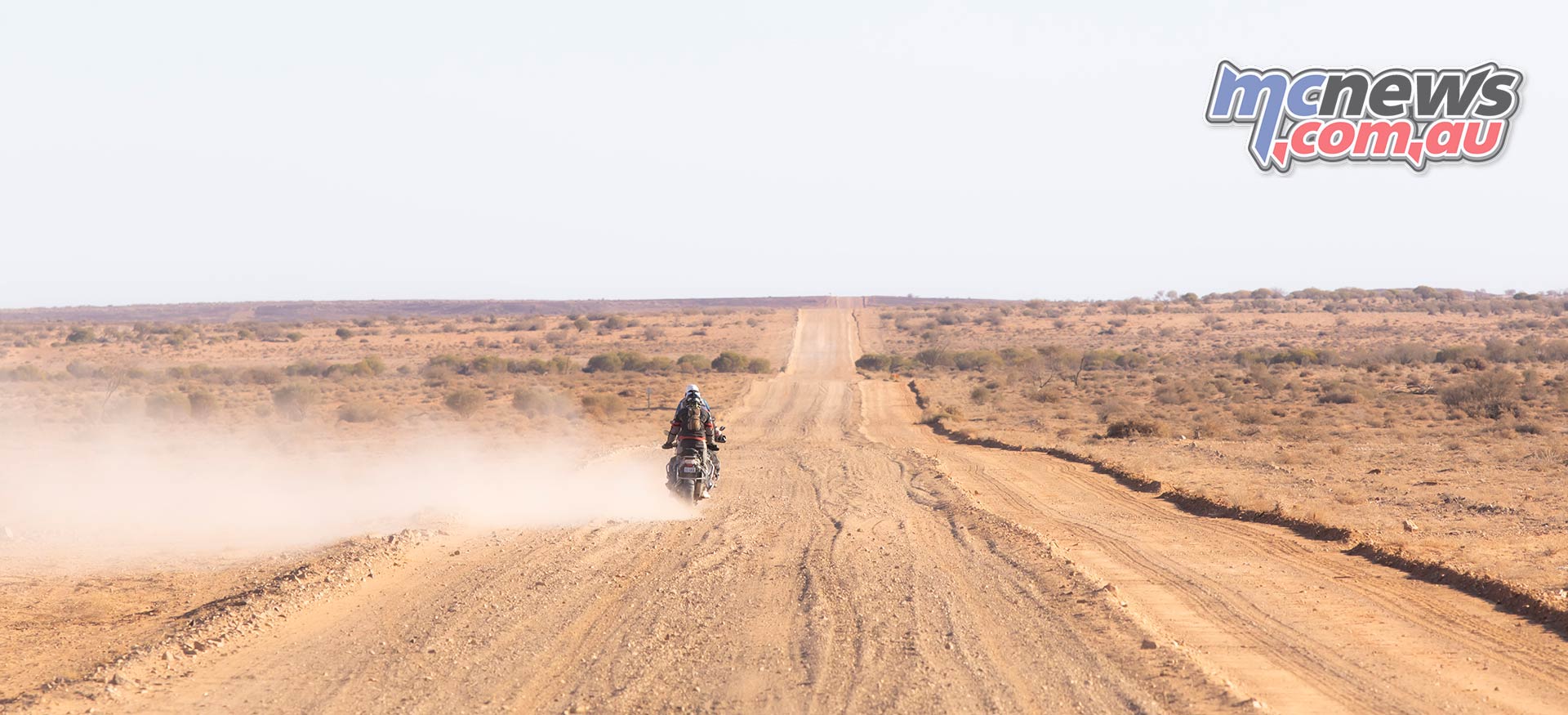
Loose gravel sections everywhere, with mounds pushed up either side of wheel tracks, turned what would normally have been a relaxing cruise, into something that could go pear shaped awful quickly from any momentary lapse of attention. One rim got squashed so badly from a rock impact it was beyond repair and had to be replaced by the support crew.
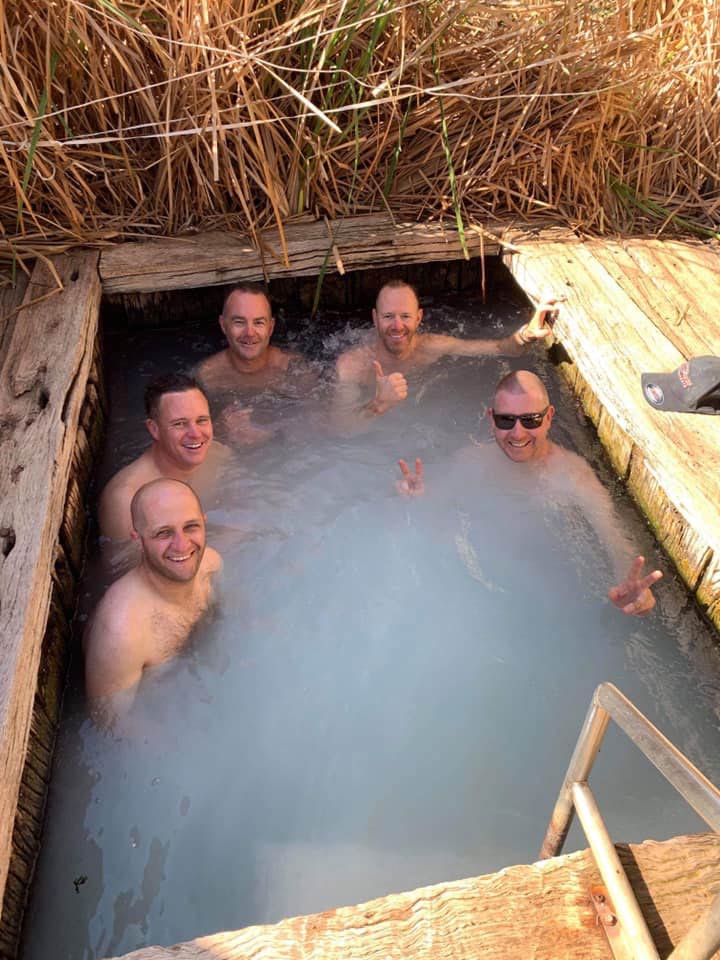
Not far out of Oodnadatta we turned right on Mount Dare Road. This was a proper flat and barren landscape like something out of a movie set on Mars. I say Mars as that is known as the red planet and this terrain had pretty much every shade of red known to man.
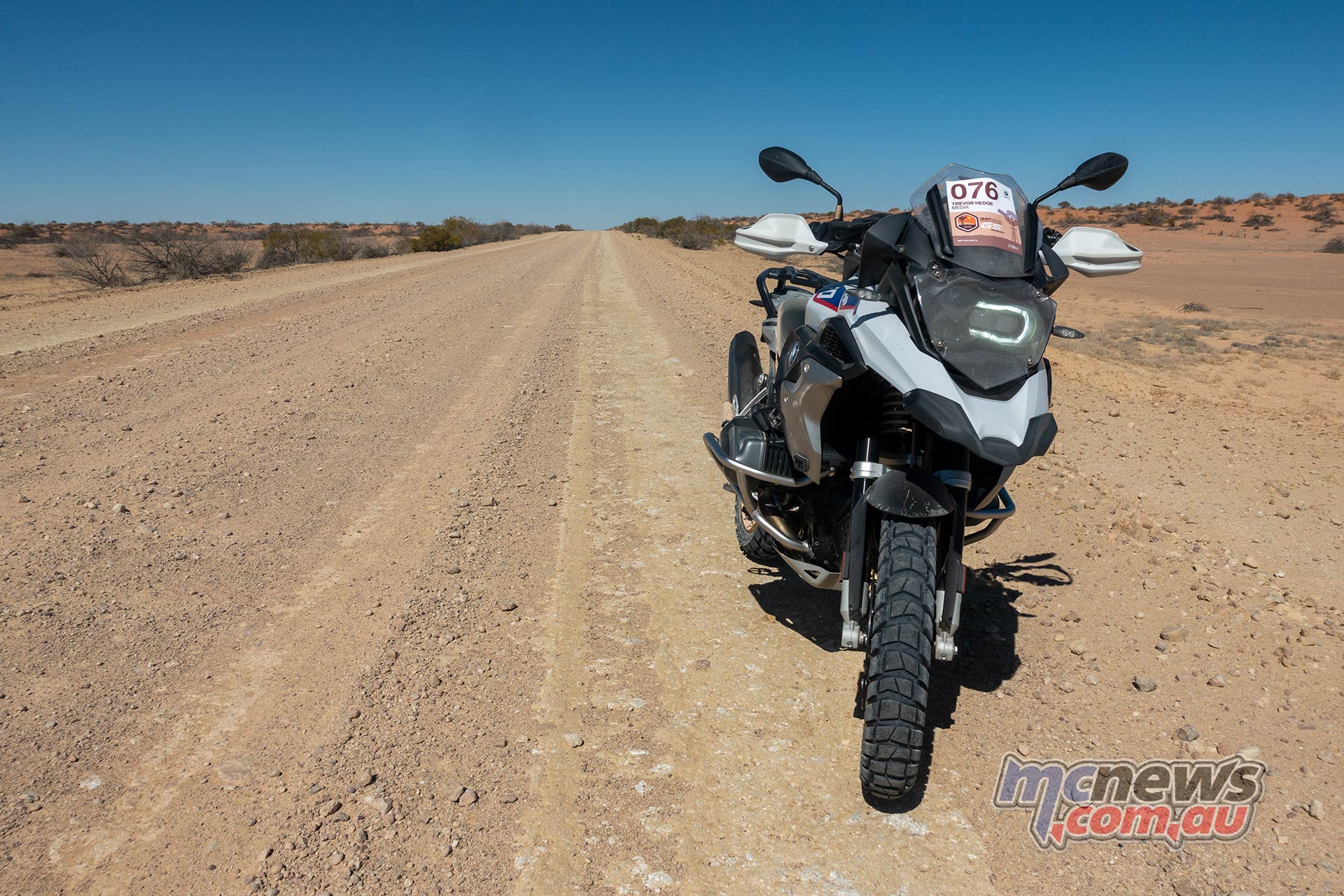
All except for one spring fed oasis that appeared like a a hallucination as it had been so long since we had seen any body of water. This beautiful spot appeared in what felt like the middle of nowhere thus I had to stop for a photo, gee the flies were friendly!
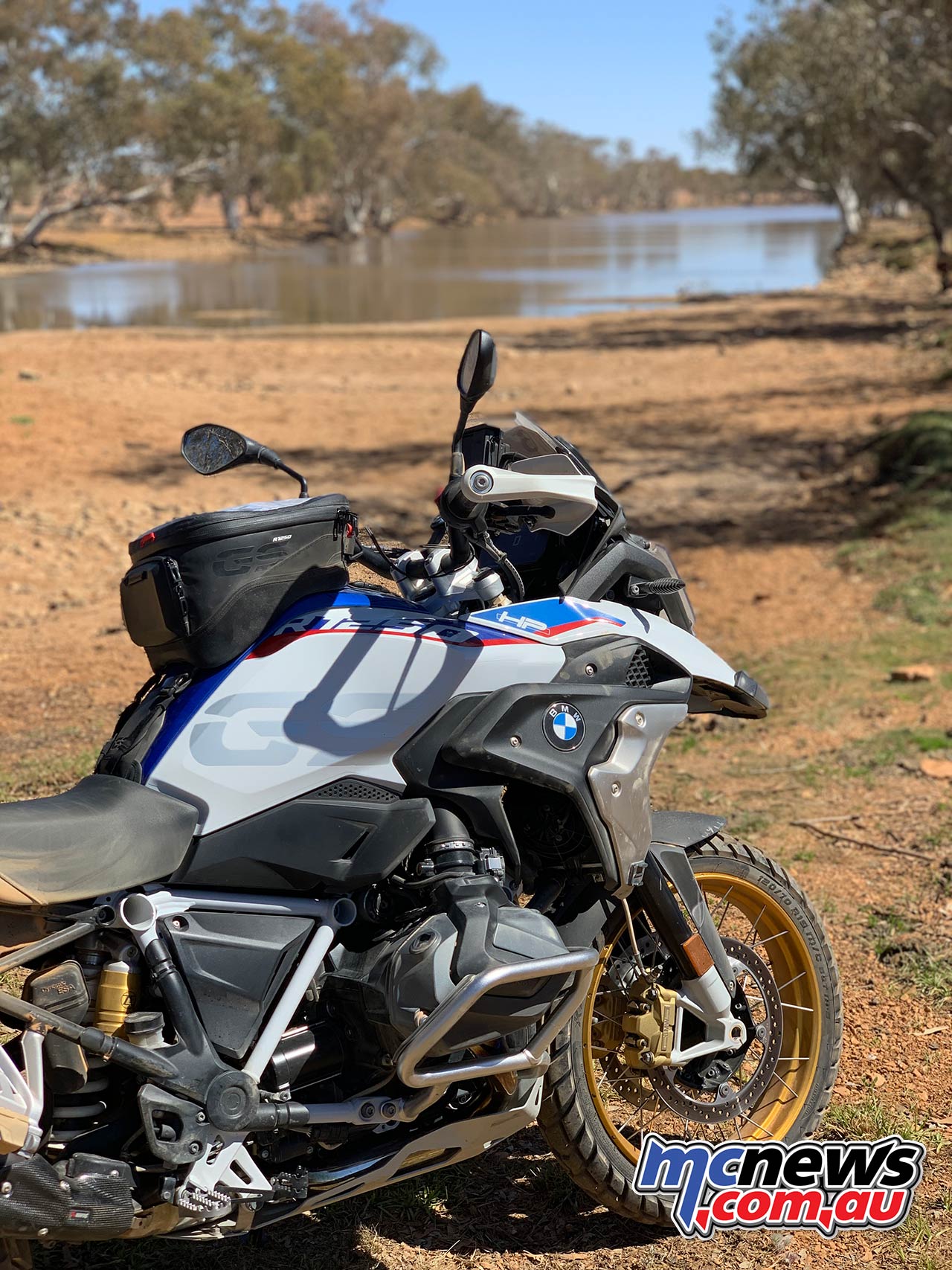
This is known as Eringa Waterhole in the outback area known as Marla. It was originally part of Eringa Station which was established in the 1870s before being purchased by Sidney Kidman in 1899. Station buildings are now derelict and the land is now part of the greater Hamilton Station.
Others that passed through when we did said they had never seen the waterhole that dry, and that it normally stretches right out to the dip in the road we traversed through Witjira National Park on our way to Mount Dare for the night.
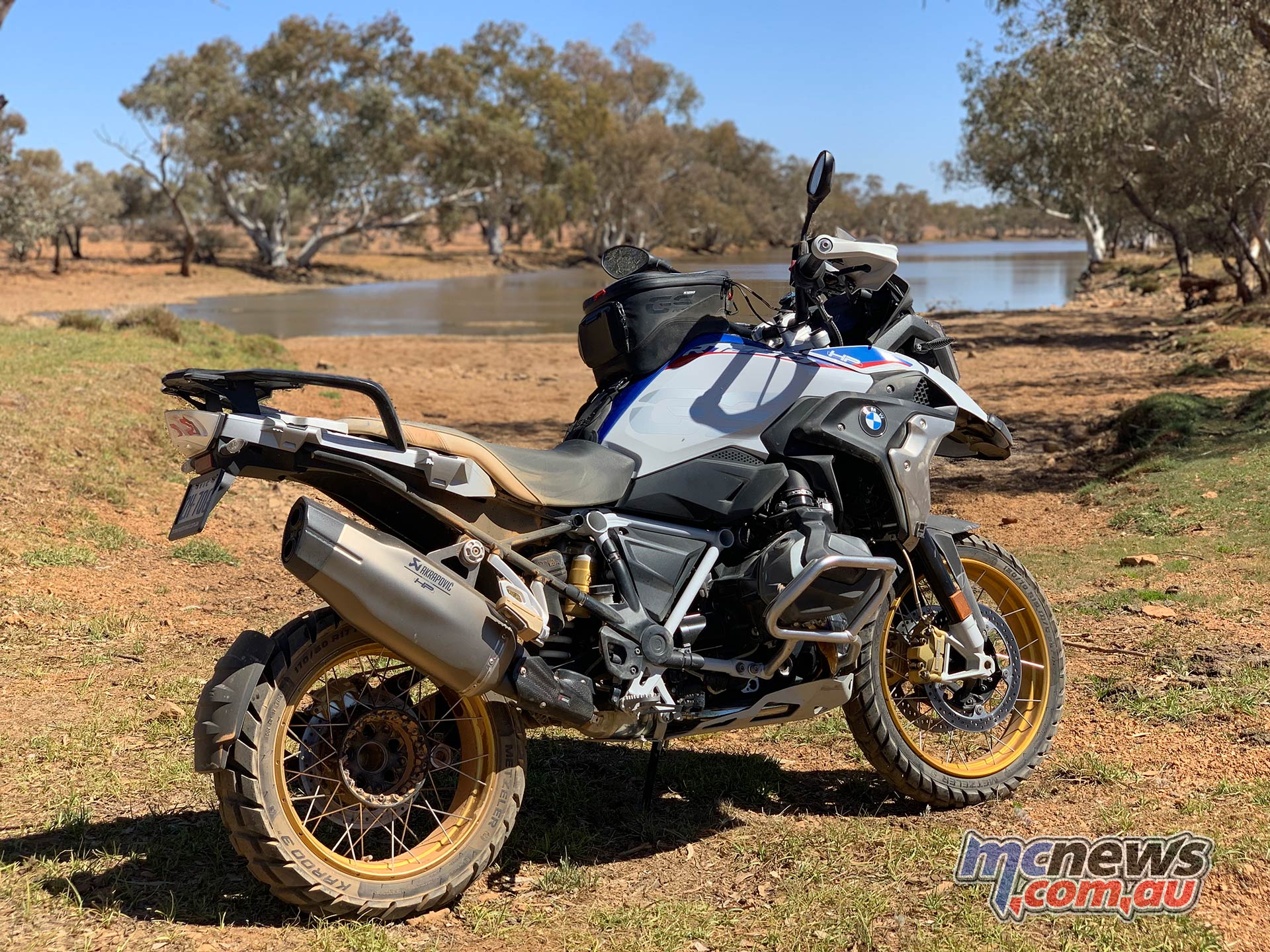
It was a truly magical contrast after miles and miles of largely nothing to have this amazing gum tree lined waterhole appear out of the dust.
We then continued on through a few sandy sections before arriving at Mount Dare where we made camp for the night. Mount Dare consists of a pub on the edge of the Simpson Desert with a couple of fuel bowsers, and that’s about it…
Sounds like a recipe for a good time, although this fella at the bar was quite rude and demanding at times.
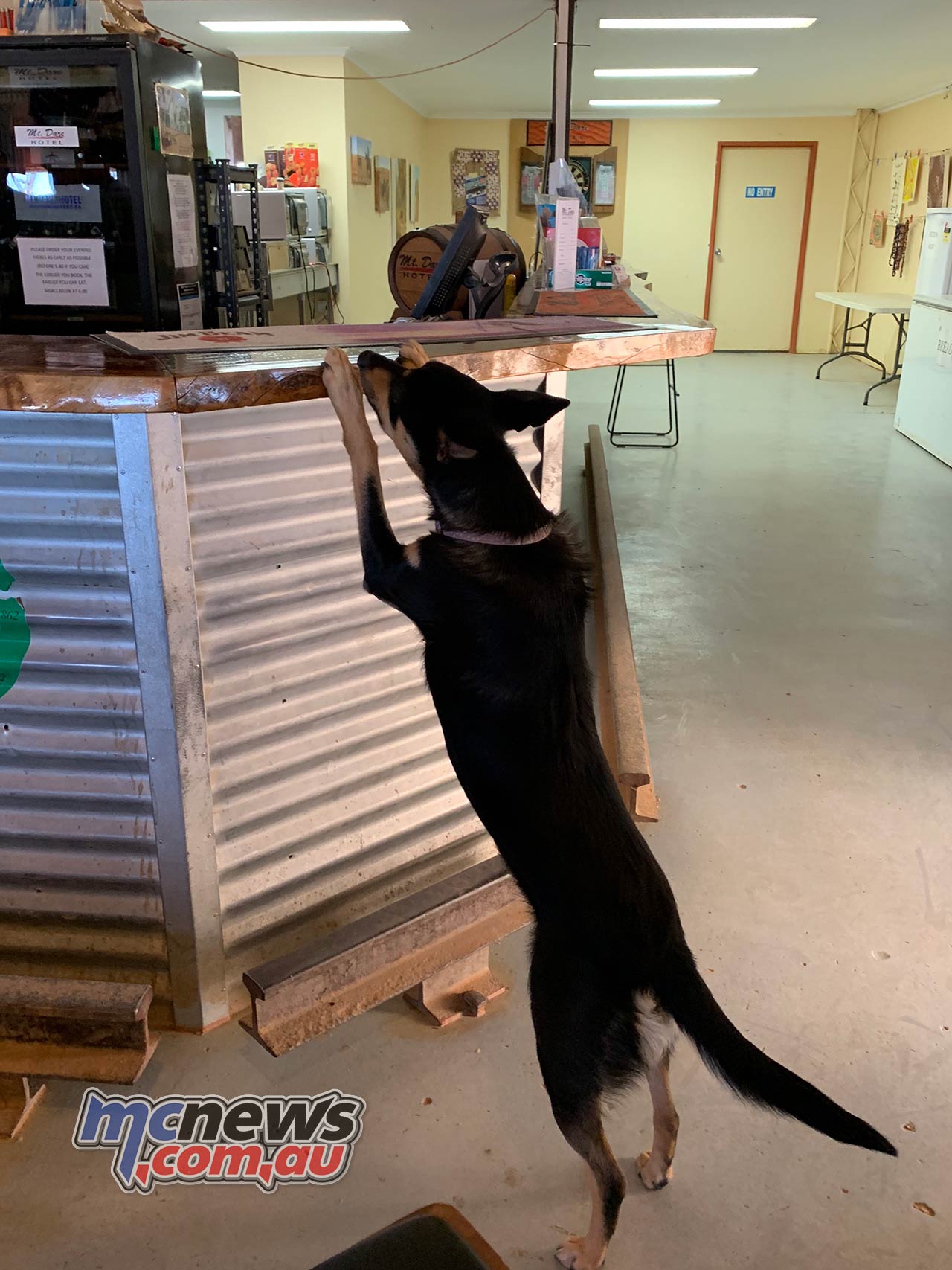
It was an earlier one for most as we crawled into our respective swags or tents for the night.
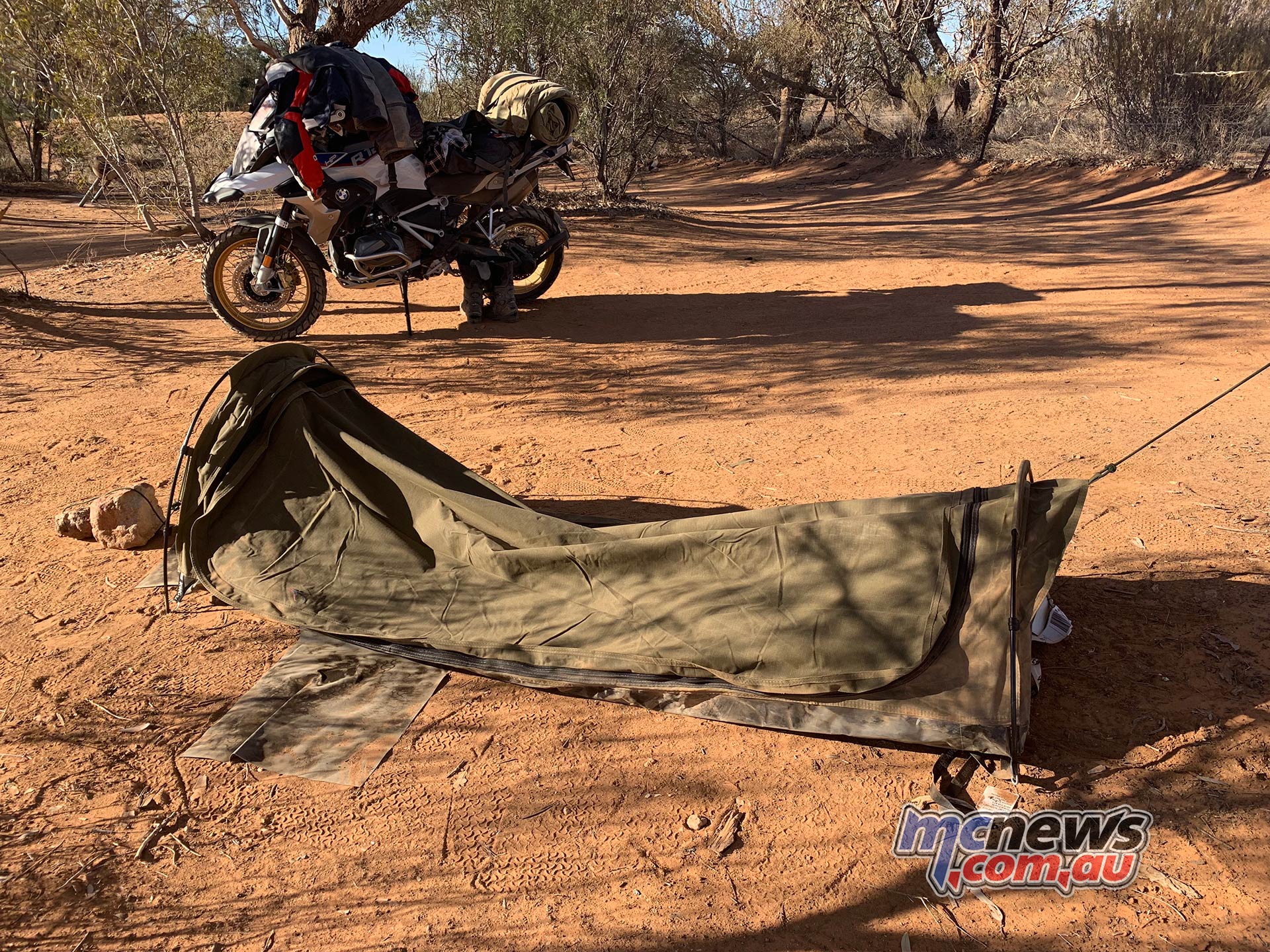
One fella though had a pretty big off before Mount Dare. His Shoei Hornet helmet clearly saved his life. His head had visible marks all across one side where the patterns from the padding inside the helmet had compressed and spread the impact load right across the side of his head. I have never seen anything like it. Come morning those marks were purple lines of bruising. The accompanying GS Safari medics checked him over and gave him the all clear. He liked his Shoei Hornet before, but is now a sworn Shoei customer for life.
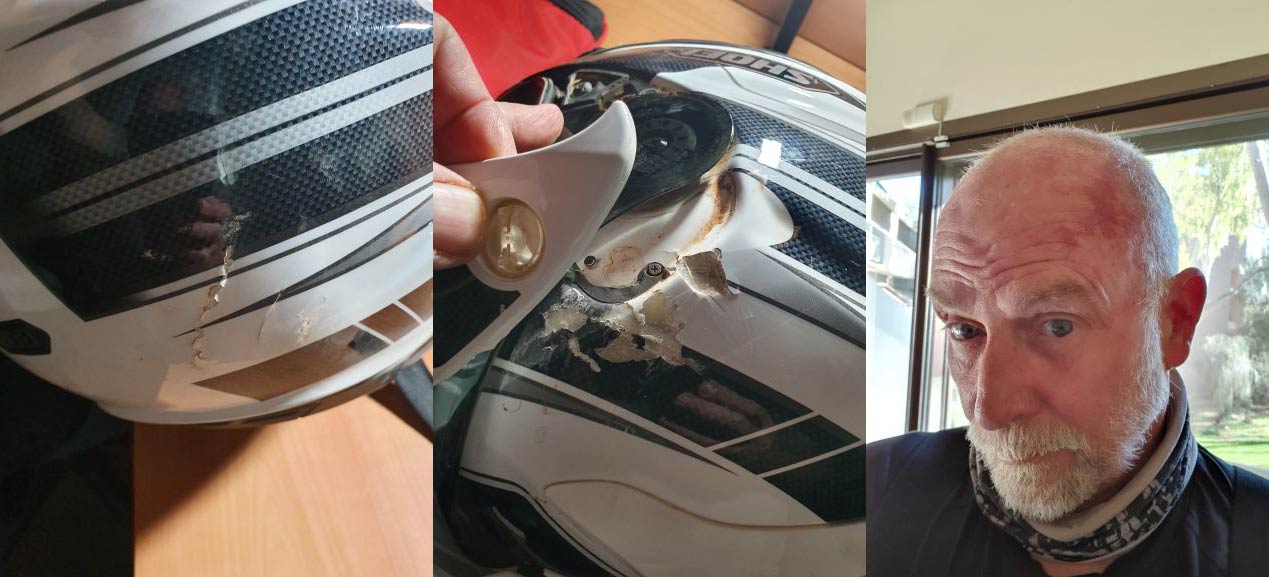
GS Safari Enduro Day Six
Mount Dare to Alice Springs – 577 km
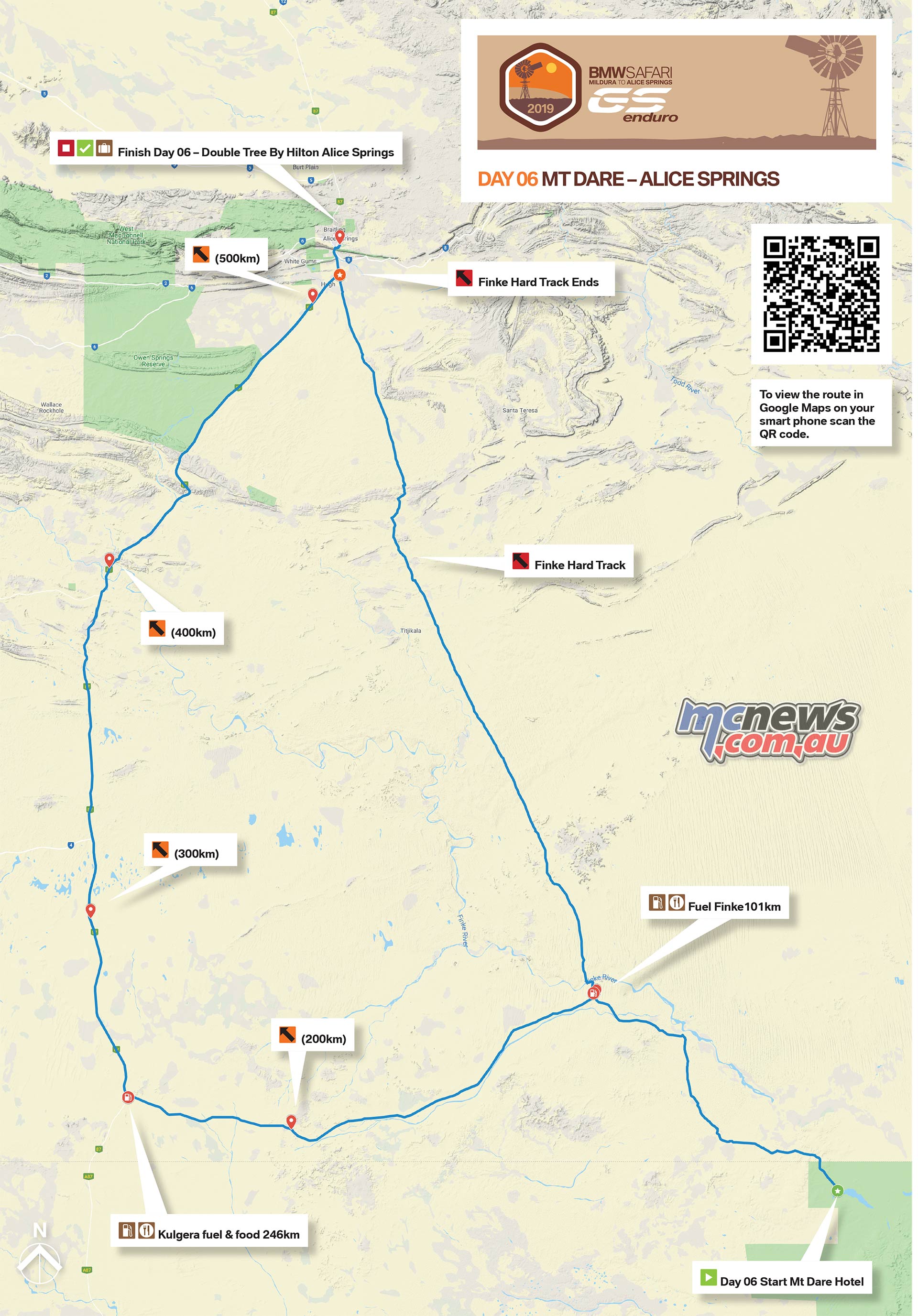
Mount Dare to Alice Springs – 577 km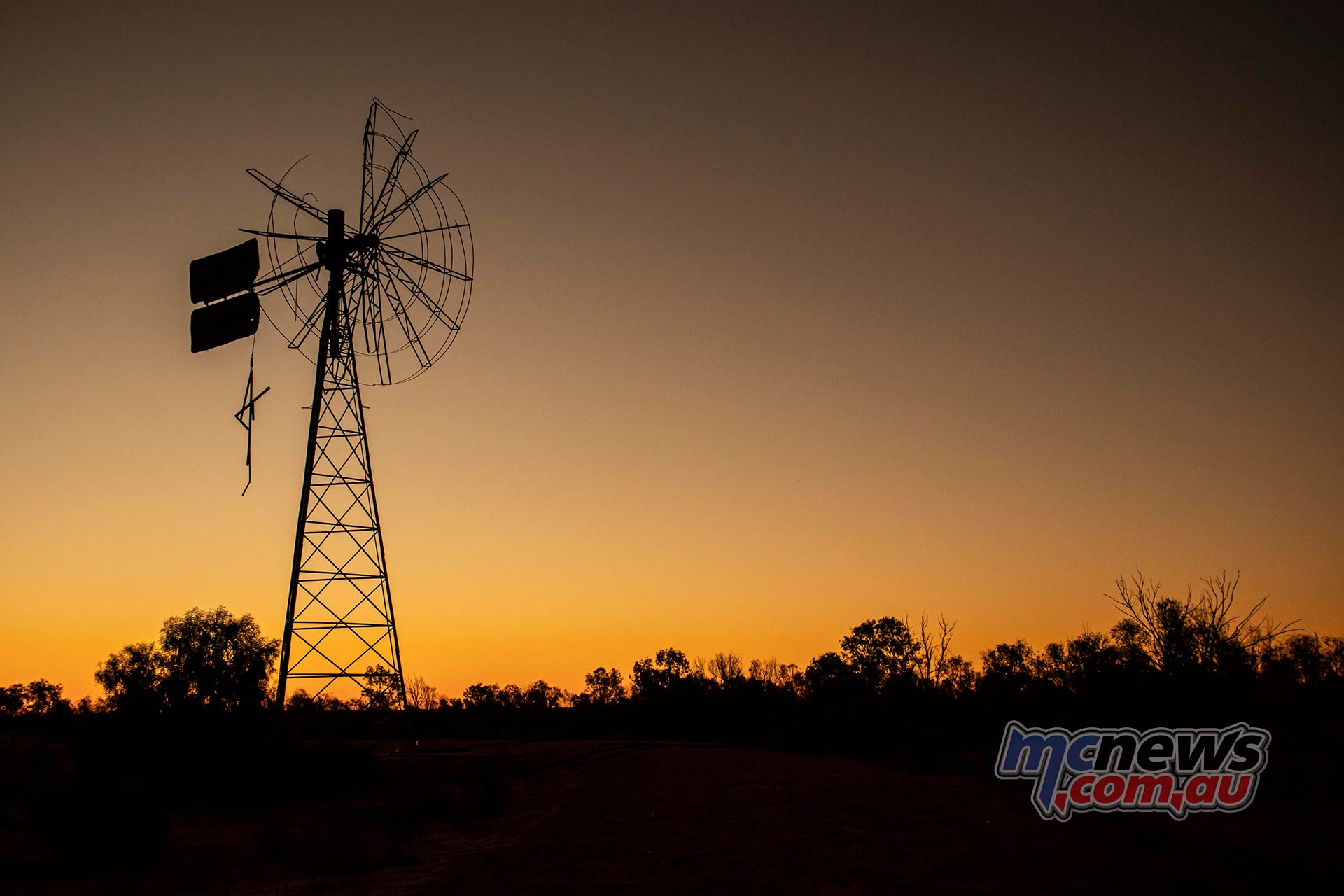
Day six was always going to be a litmus test for some, those that were brave enough to attempt the Finke access track after lunch were in for a real challenge.
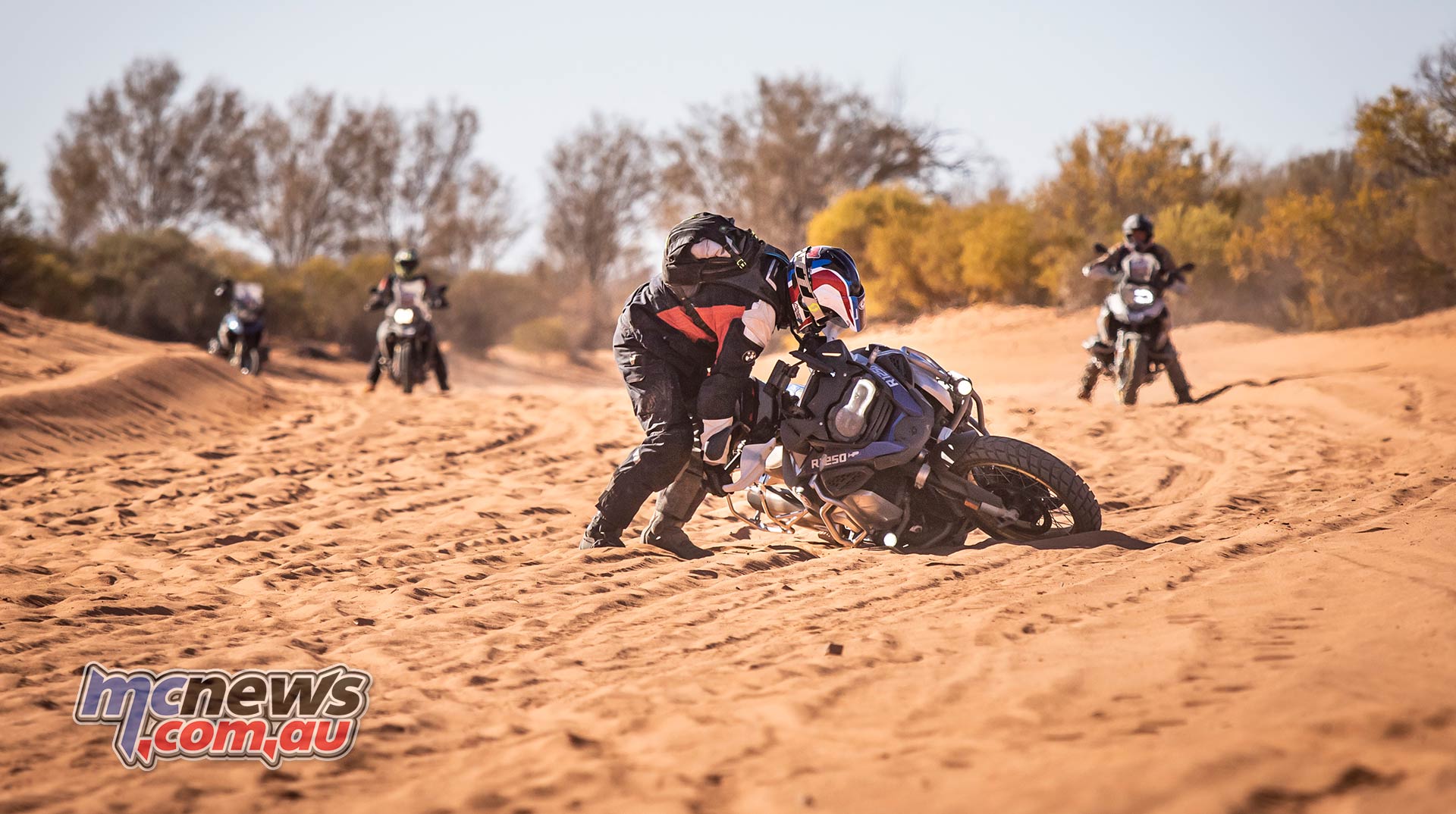
But it turned out that everyone was going to have to negotiate some long and soft sand sections, complete with some testing sand drifts, as Abminga Road presented much more of a challenge than expected even before we got to Finke.
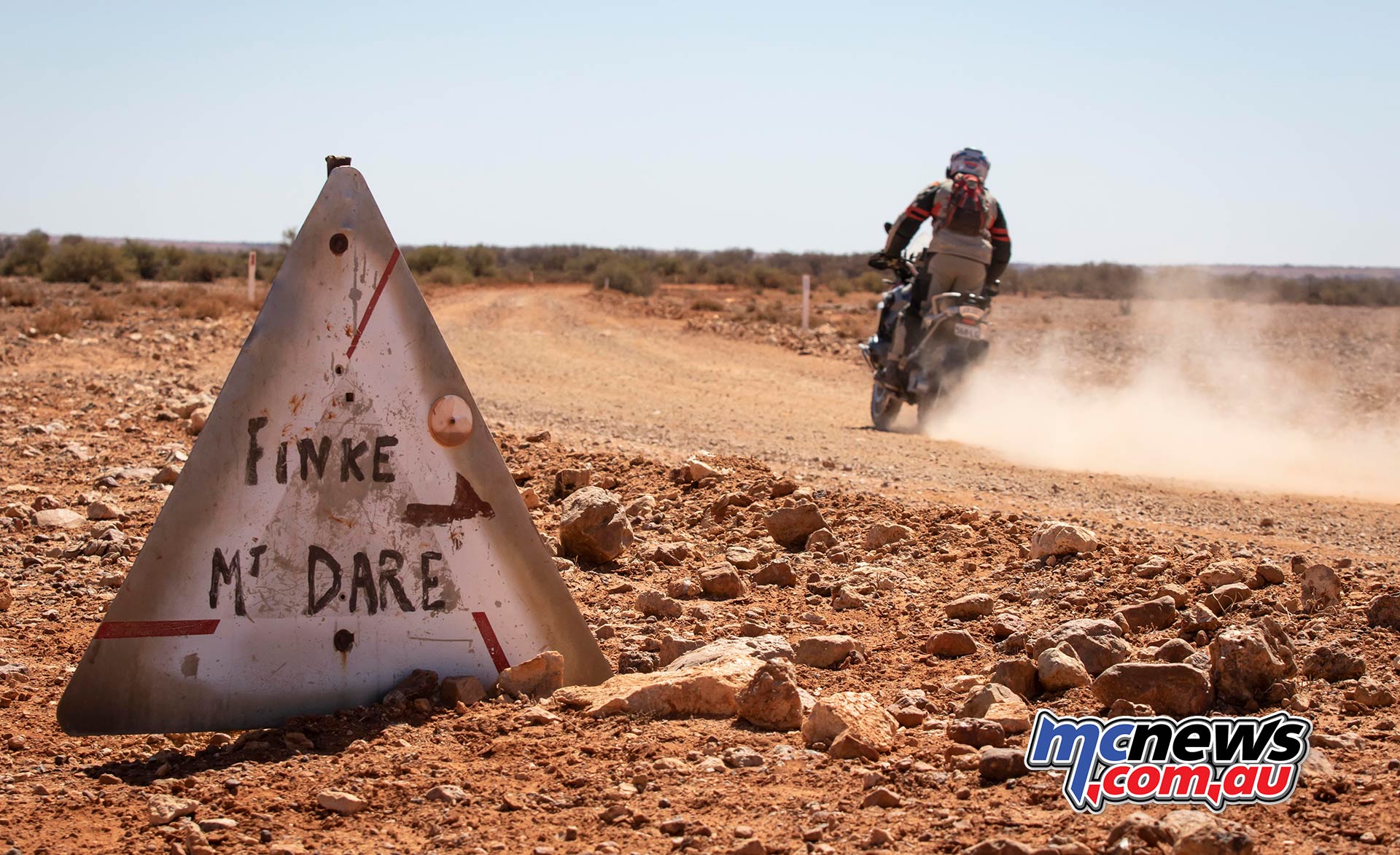
There were plenty of falls but no injuries and everyone rolled into Finke in good shape. I was in early so was lucky enough to get some of the last litres of fuel from the Finke Service Station tanks before they ran dry….
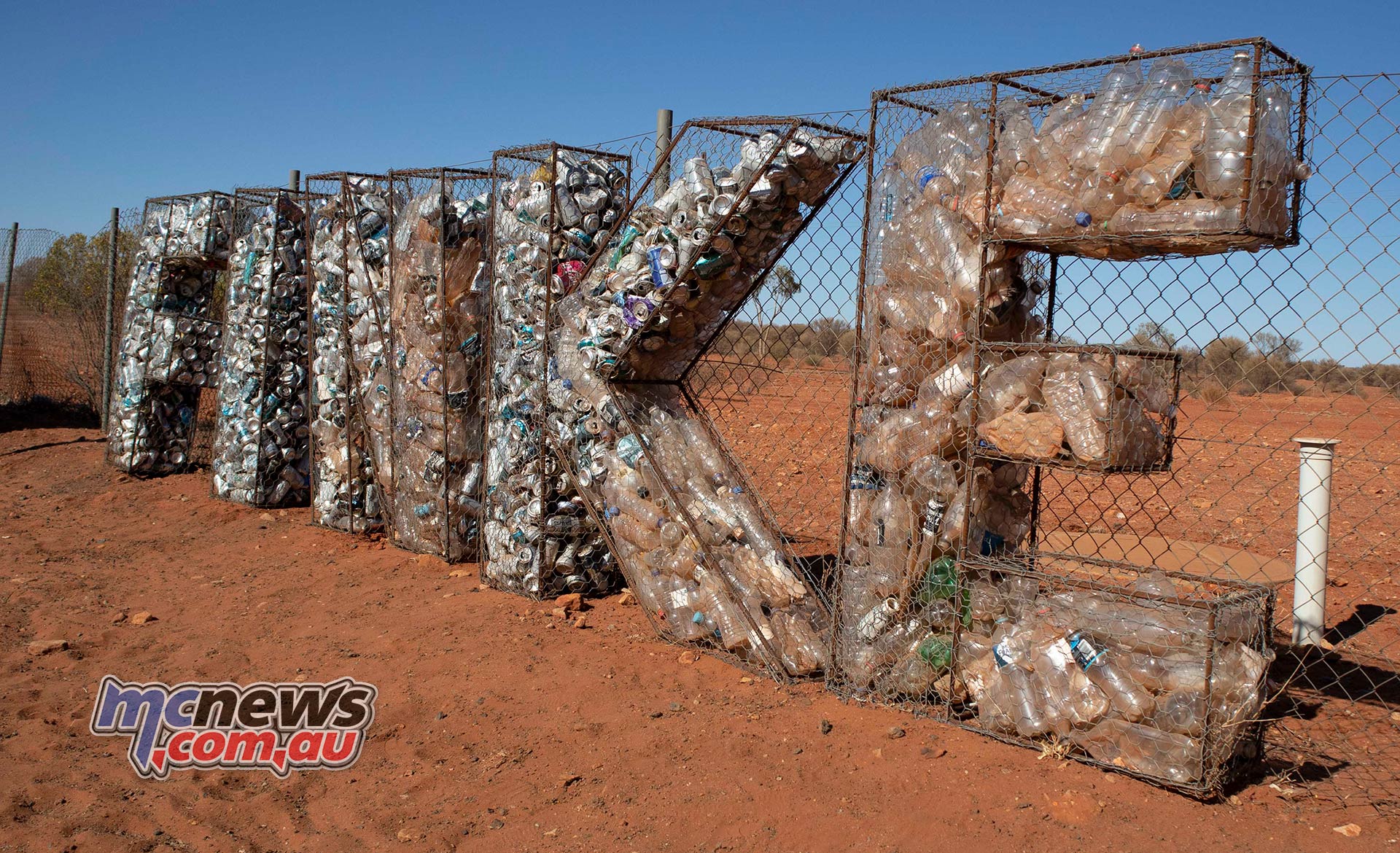
Those on the big tank Adventure models would be okay from here but anyone on a regular GS was going to need fuel. Fuel bladders were emptied and nearly all the remaining gerry cans from the support vehicles were drained to give everyone enough fuel to make it to the next stop.
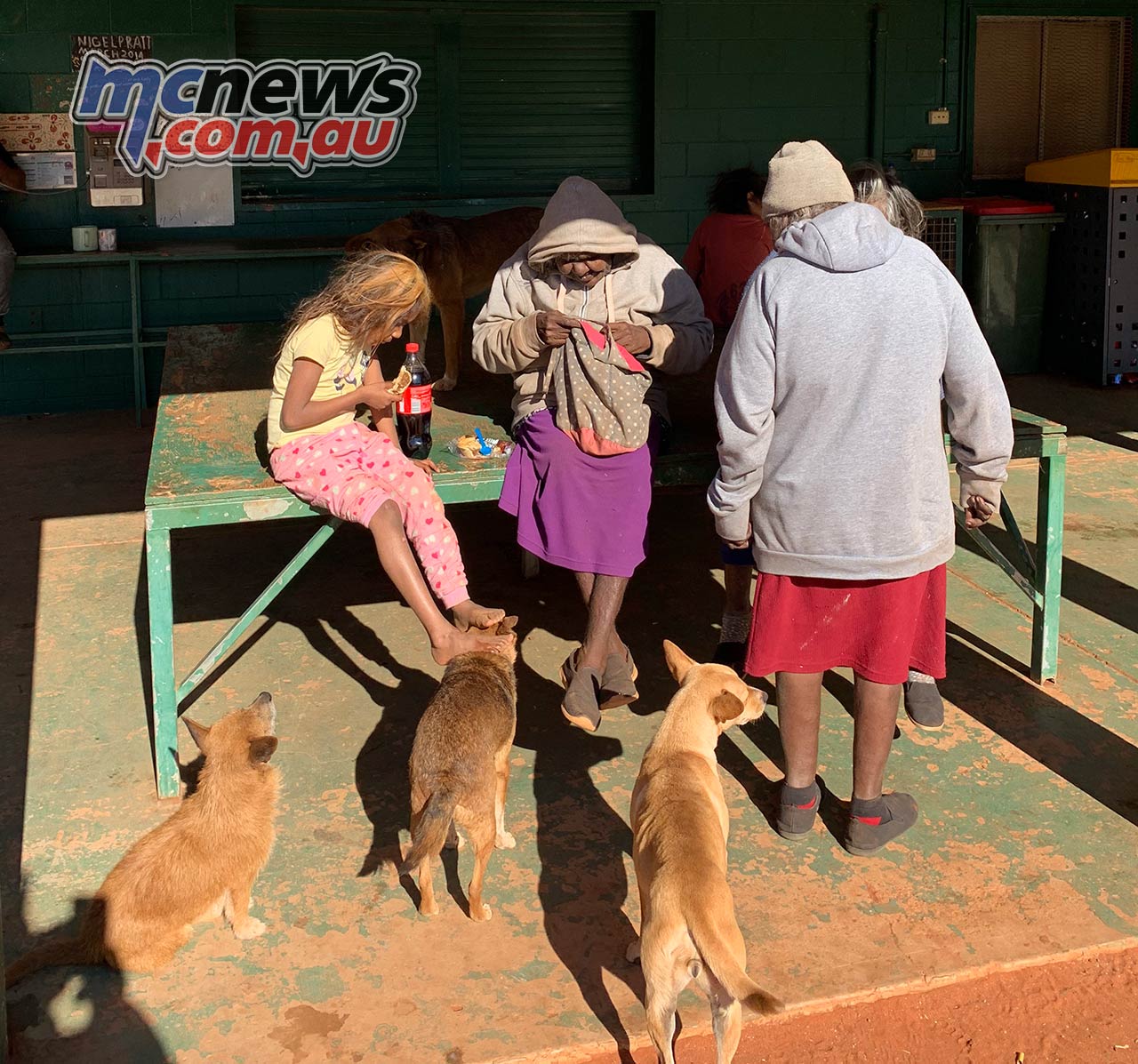
From here everyone had a decision to make. Take the easier option, which still had enough hazards to keep you on your toes, or attempt the infamous Finke Track. Around a quarter of the riders decided to take the hard option.
I was in two minds at this point. I honestly had hardly really raised a sweat all week, had not come close to falling off, and had picked up many fallen riders through the sand sections that I had sailed through.
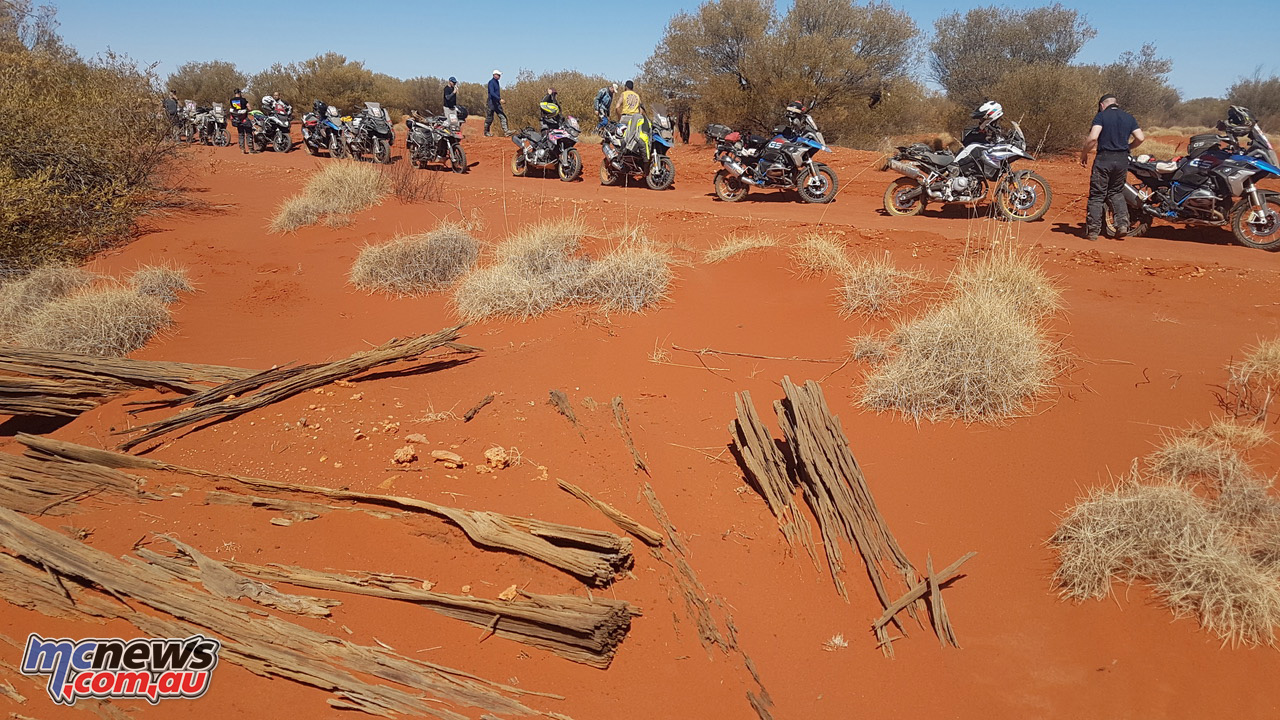
But there is sand, and then there is ‘sand’… Would the track be in good shape, or would it be chopped up and really, really soft? I was ready to take the simpler option, to be on the safe side, but a few riders that had ridden with me during the week boosted me up enough to take on the challenge. I should have taken the easier option.
Only a few kilometres into the track the sand was diabolical. The fact that it was deep was okay, sort of, the real problem was how chopped up and messy it was. To ride sand like this you have to be on the pipe, so to speak. Weight back and power on as the bike pretty much wriggles all over the place and follows whatever is the course of least resistance.
Now on a 120 kg enduro bike that is fair enough, but it does take some proper confidence and balls to hold it on when 240 kg of GS is threatening to batter you into the sand every few seconds. It also takes fitness, and 15km in I was done. I hadn’t crashed, but I was going to, and thus I thought it best to pull out and ride the 15km back out, rather than end up being evacuated by chopper or support vehicle. There was another 180km of that track to go, in what could have been the same, or perhaps even worse conditions.
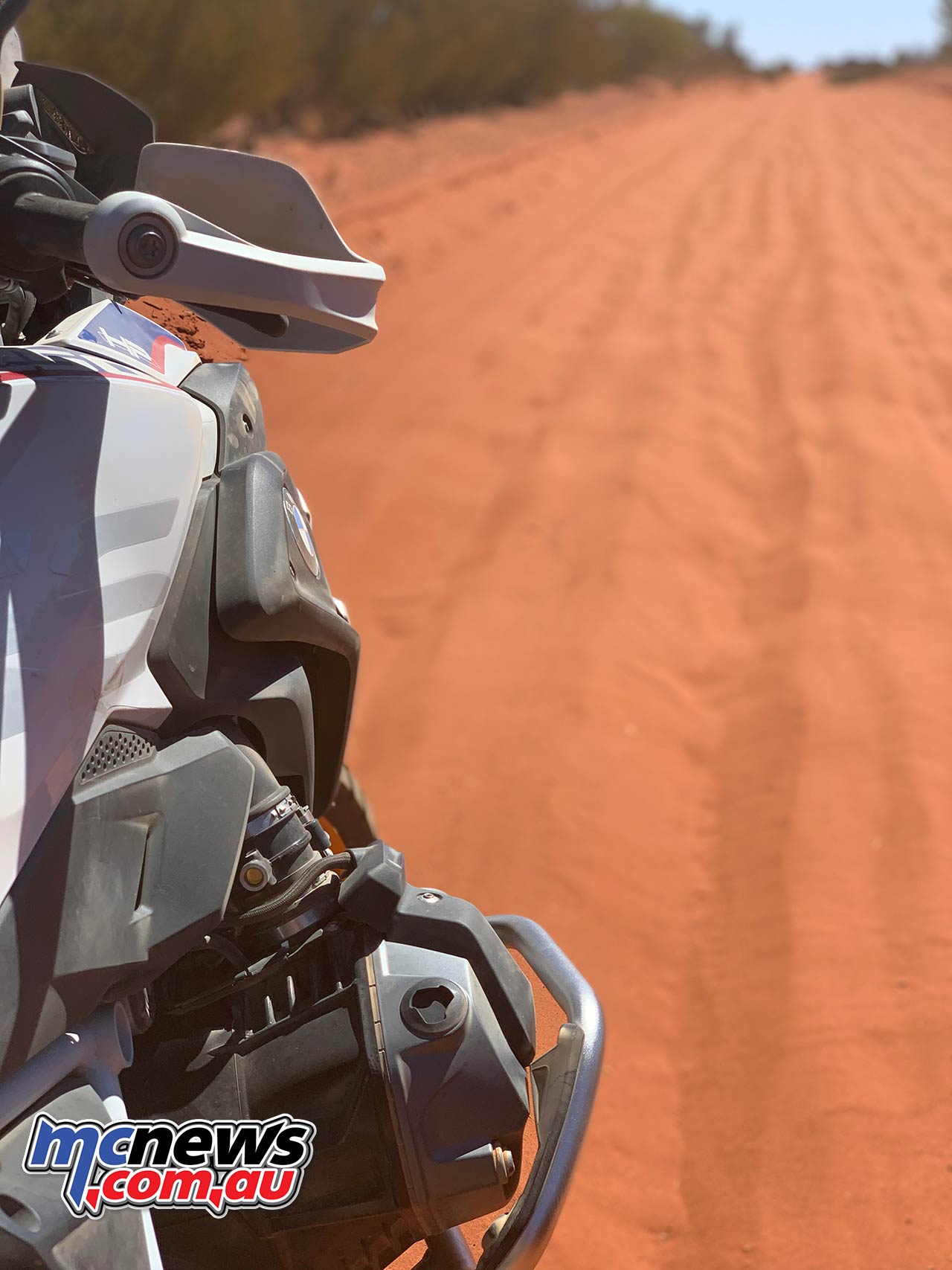
I pulled up and spoke to the chase four-wheel-drive and the decision was made that we would try and ride the bike back out and let those up ahead know that I was going back out and switching to Option B. We had not stopped long before a lead rider came back, and then another lead rider came back. It turned out that in fact more than half of the group were in real trouble a few kilometres further on. The decision to abandon the attempt was made. But we still had to get back out the way we came, which was quite a challenge in itself. The track now even more chopped up than it had been when we went in.
We regrouped back at Finke and then headed out on a long gravel track towards Kulgera Roadhouse. Here we refuelled the bike and ourselves. A few riders had suffered punctures on the run out from Finke, and more yet then suffered punctures on the final highway run up to Alice Springs.
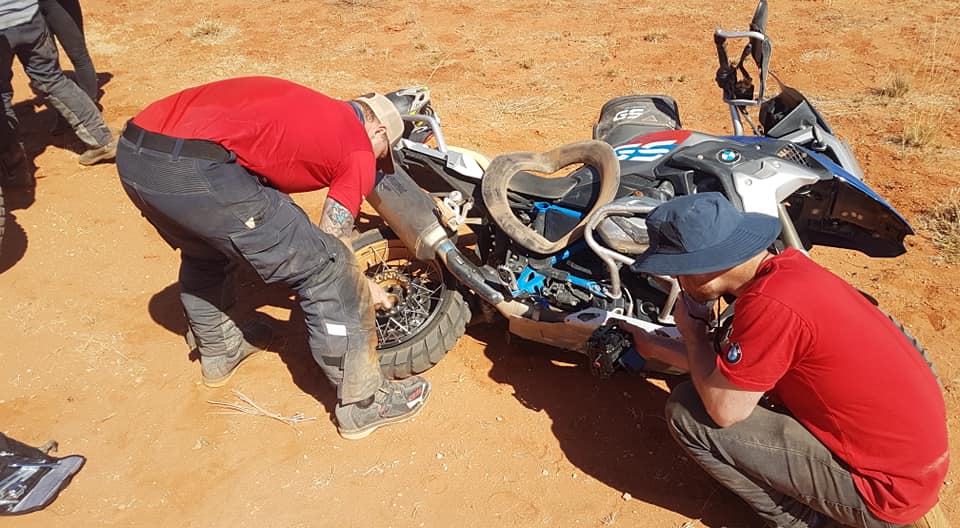
There is no reliable measure of how many puncture repairs were made during the week but we are talking triple digits.
The guys in the support truck, primarily Stu Tait, had completed 148 tyre changes throughout the trip. When on the clock he got it down to under four-minutes!
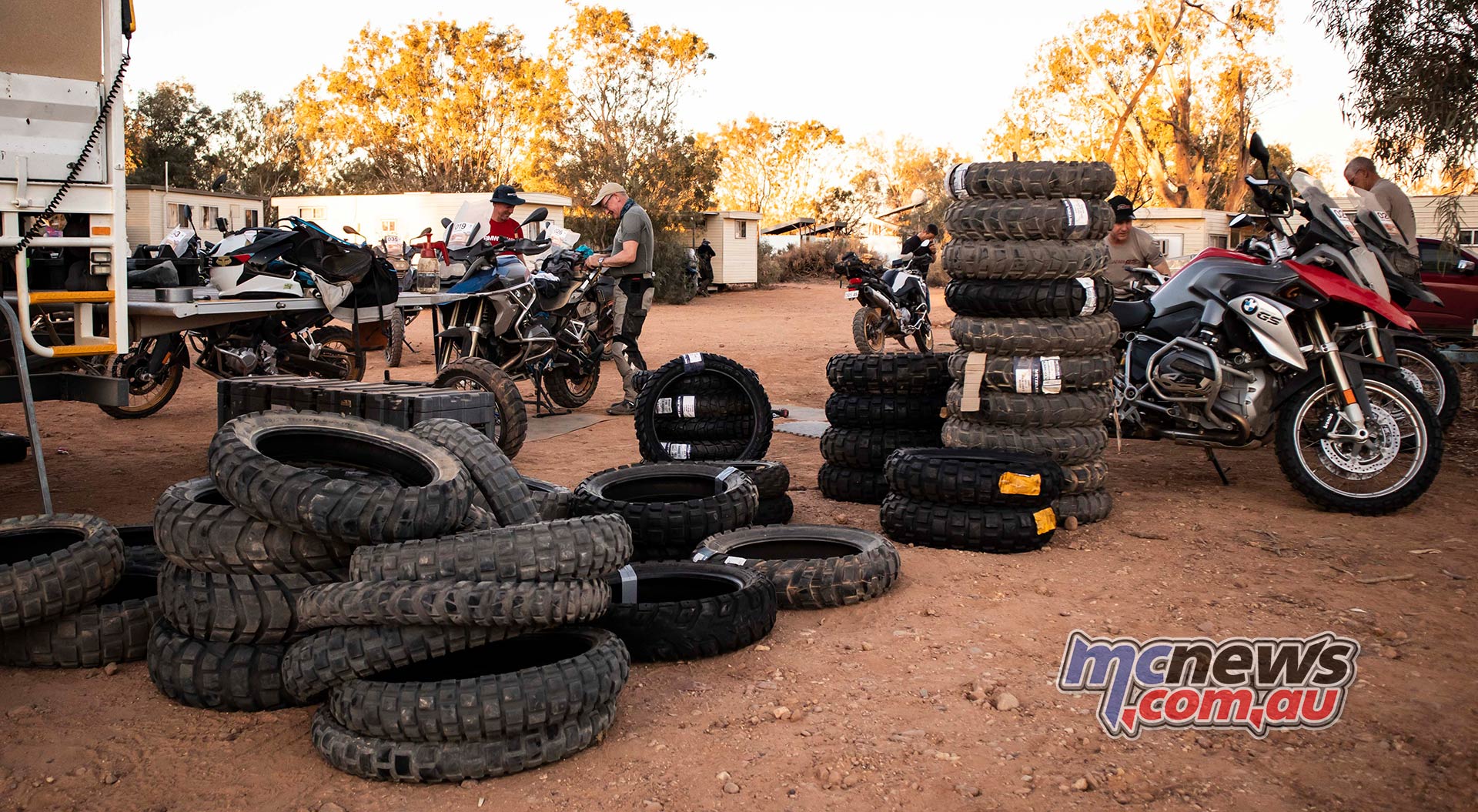
The wind-up dinner in Alice Springs was a celebratory affair tinged with a note of sadness that it was all over. Most were flying out from here, their bikes being transported back to their chosen port of origin, but many still had to ride 2000 kilometres or more to get home.
Among them was the fella that had smacked his head real hard on day five. His helmet looked reasonably okay, externally, but it had clearly done its job and would have had no more compression inside left to give. He still had a few thousand kilometre ride home to do and I could not, in good conscience, let him ride that distance in a helmet that was no longer fit for purpose, so handed him my own Shoei to make his way home in. My good deed done for the day, but so many on Safari had done plenty of favours for others. It was just another gesture in the spirit of the event.
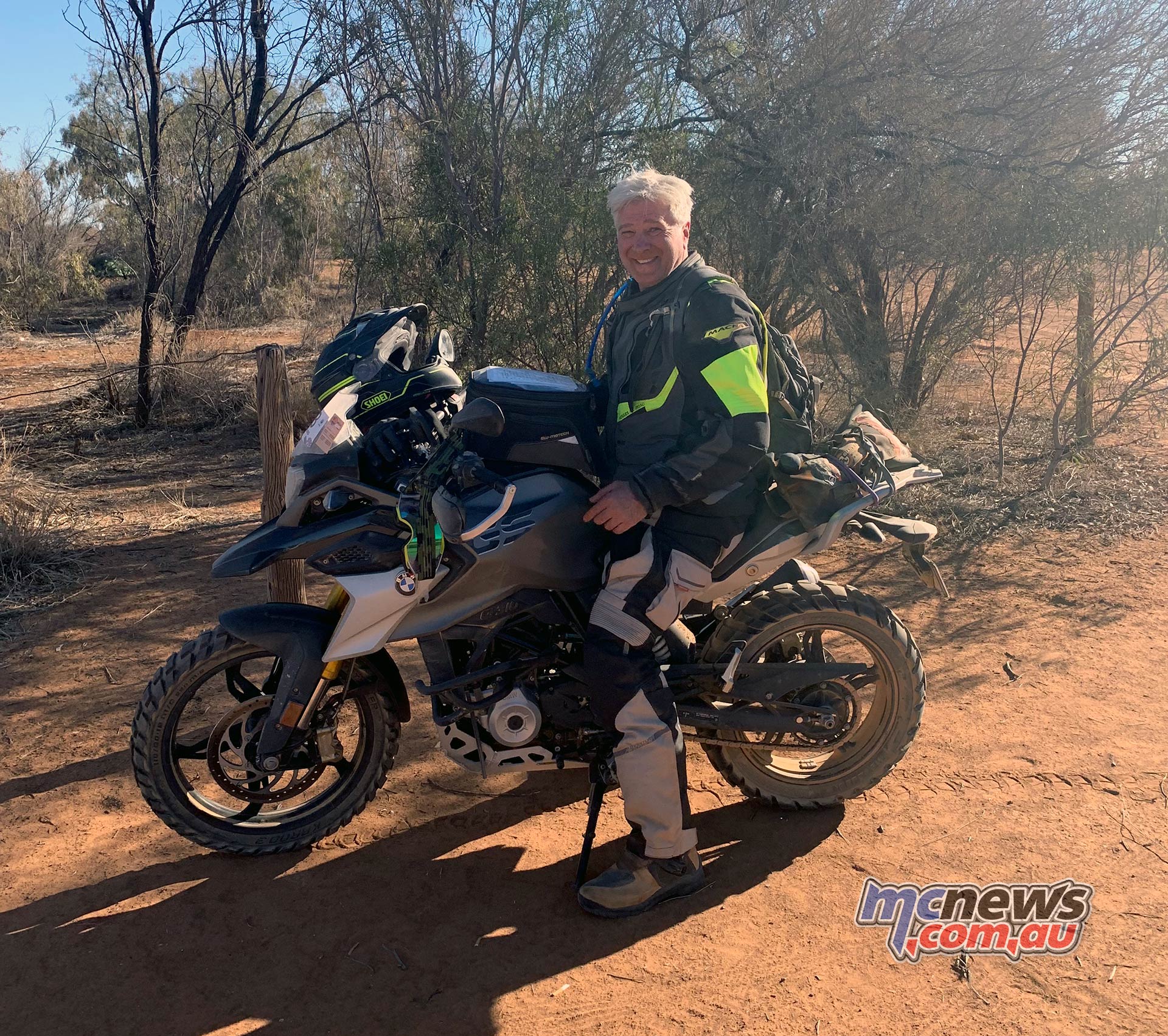
Another rider also taking the long way home was relatively new to motorcycling and had just completed GS Safari Enduro on a G 310 GS! Read Nick’s story here, it is a cracker!
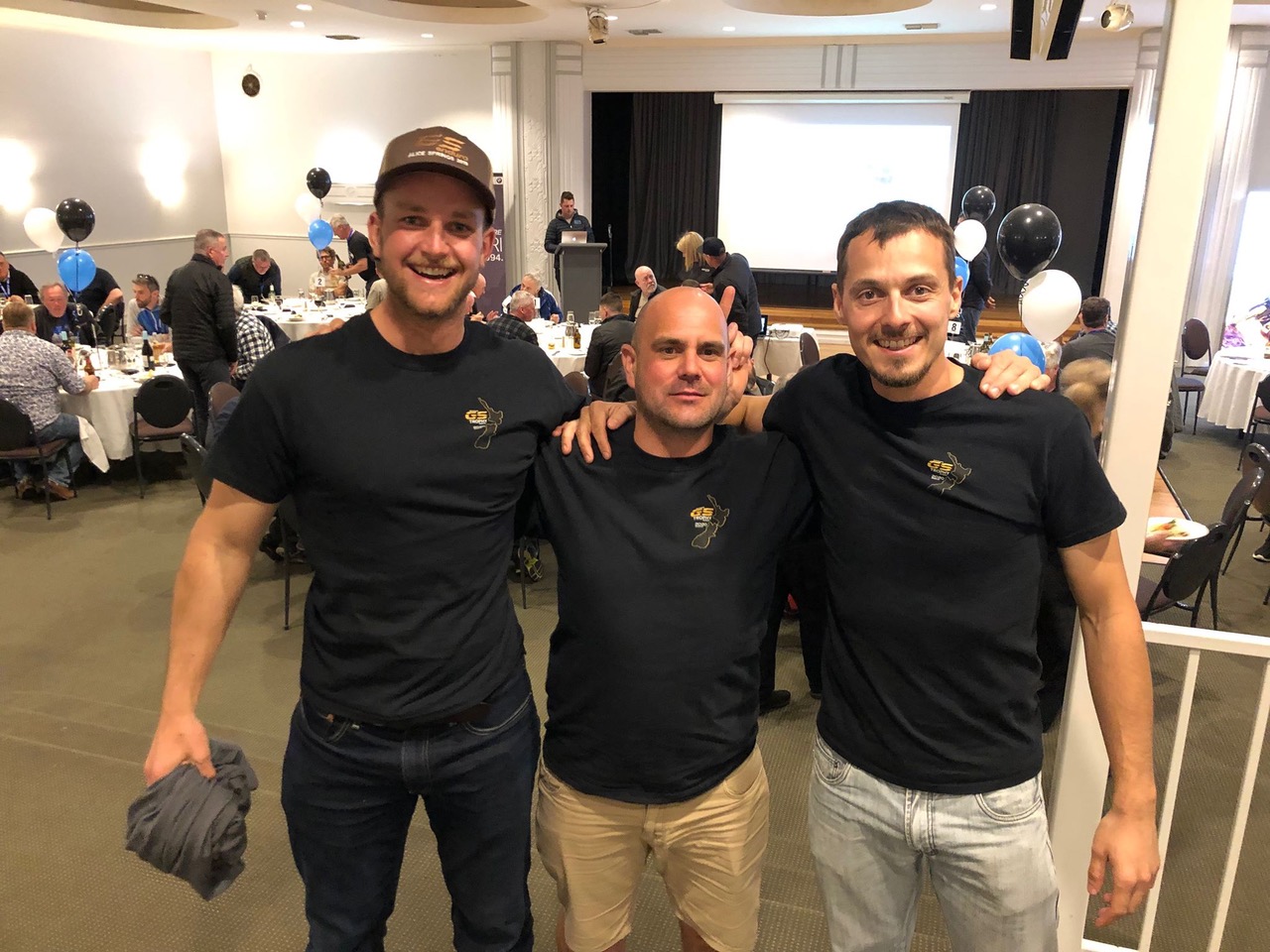
Only a fairly recent convert to GS riding, after riding motocross as a junior and then turning his hand at enduro, 25-year-old Tysen Haley was the youngest on Safari.
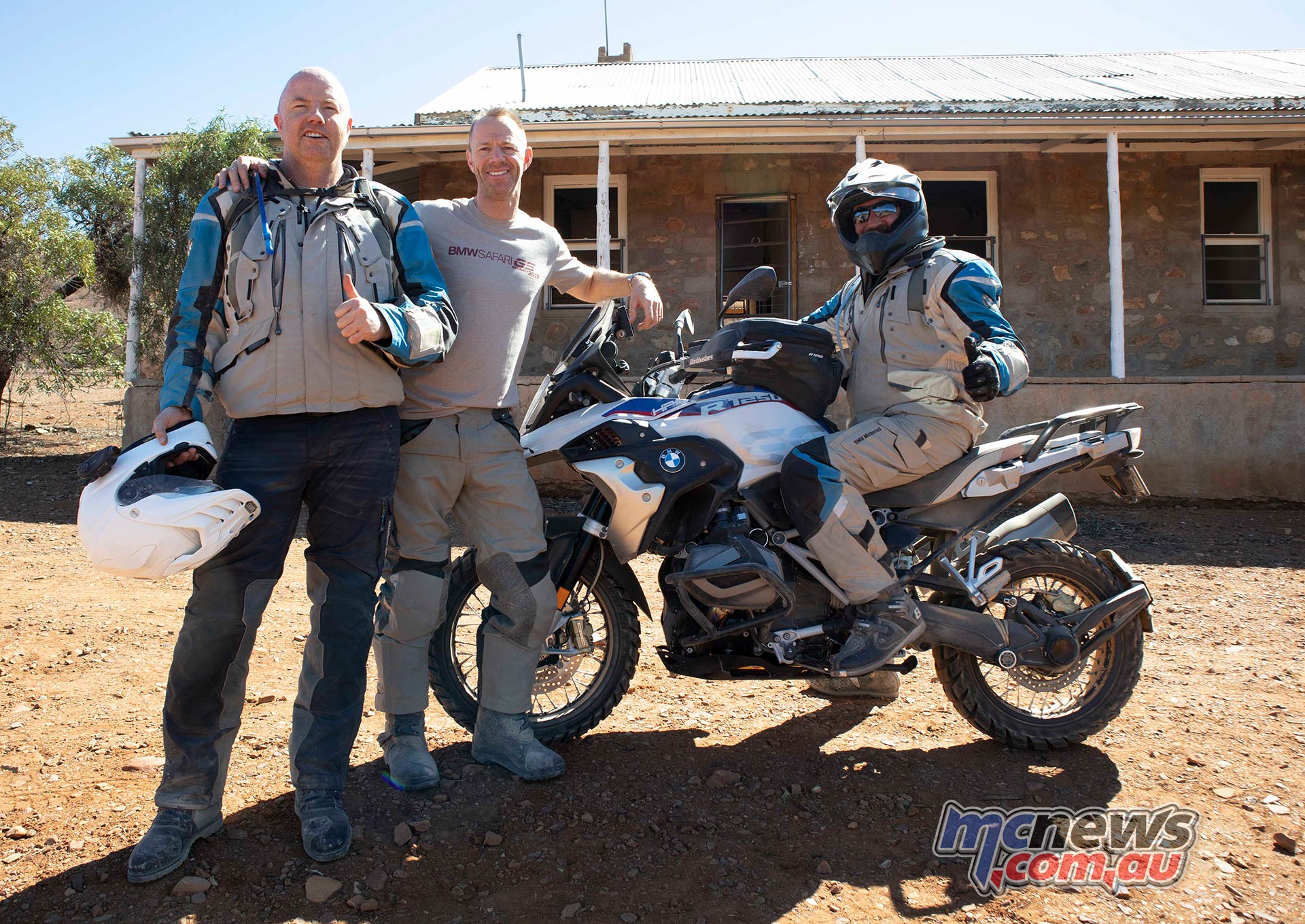
At the other end of the scale was 66-year-old Paul Malcolm. However, most riders were closer to Paul in age than Tysen, as the average across all participants was 56. An old man’s game then? Certainly not, it is just that until people get to that age it can be a struggle to come up with the disposable money to buy a late model adventure bike, and also be able to find the time off from work and away from their family.
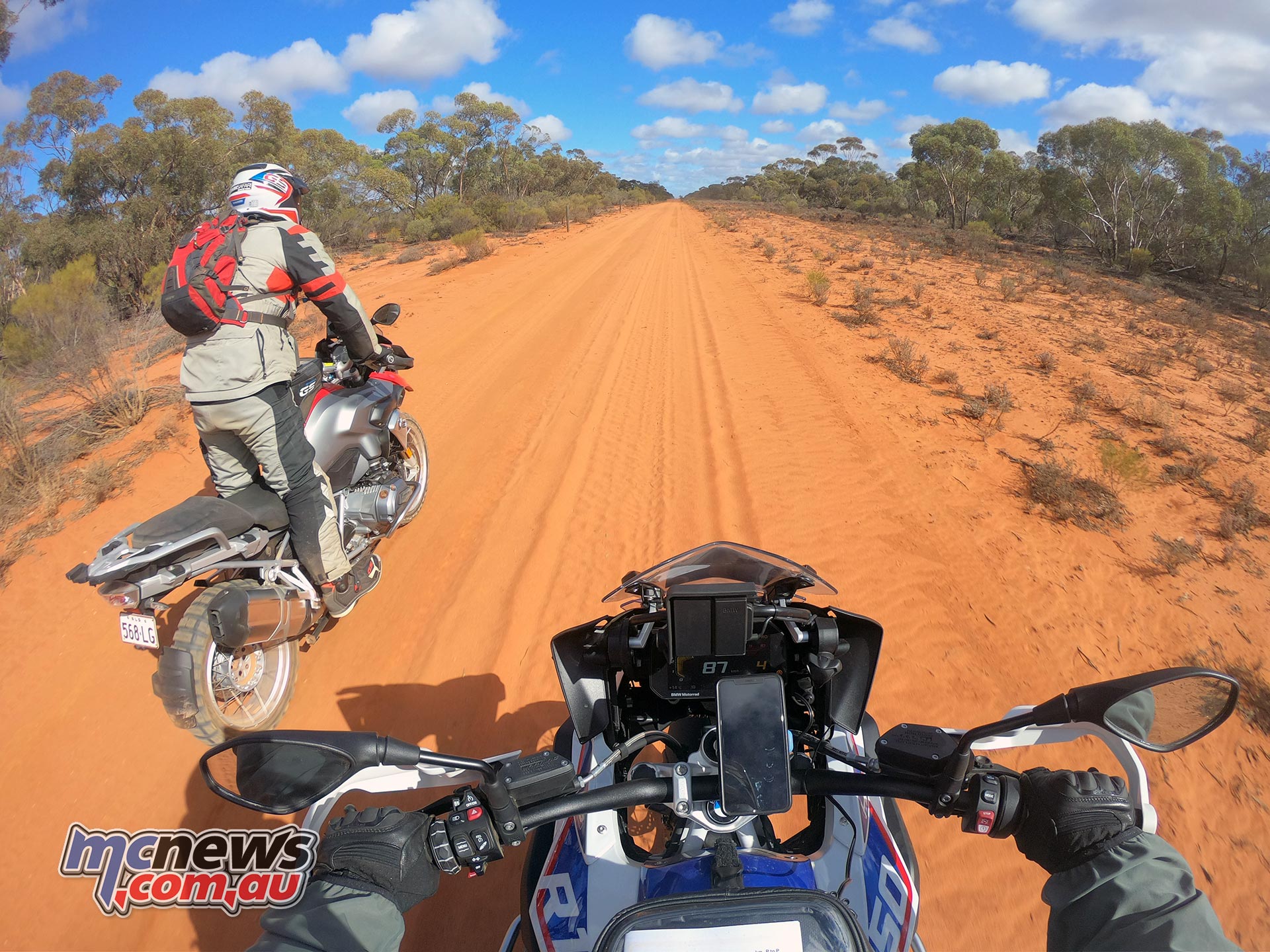
All in all it was a great experience, on a great motorcycle, in great company and with a great support team backing us up. Of course you could do this kind of trip on an old XT Yamaha or the like, camping all the way and also having a great time. But there really is nothing like taking on this type of trek on a big adventure bike like the GS.
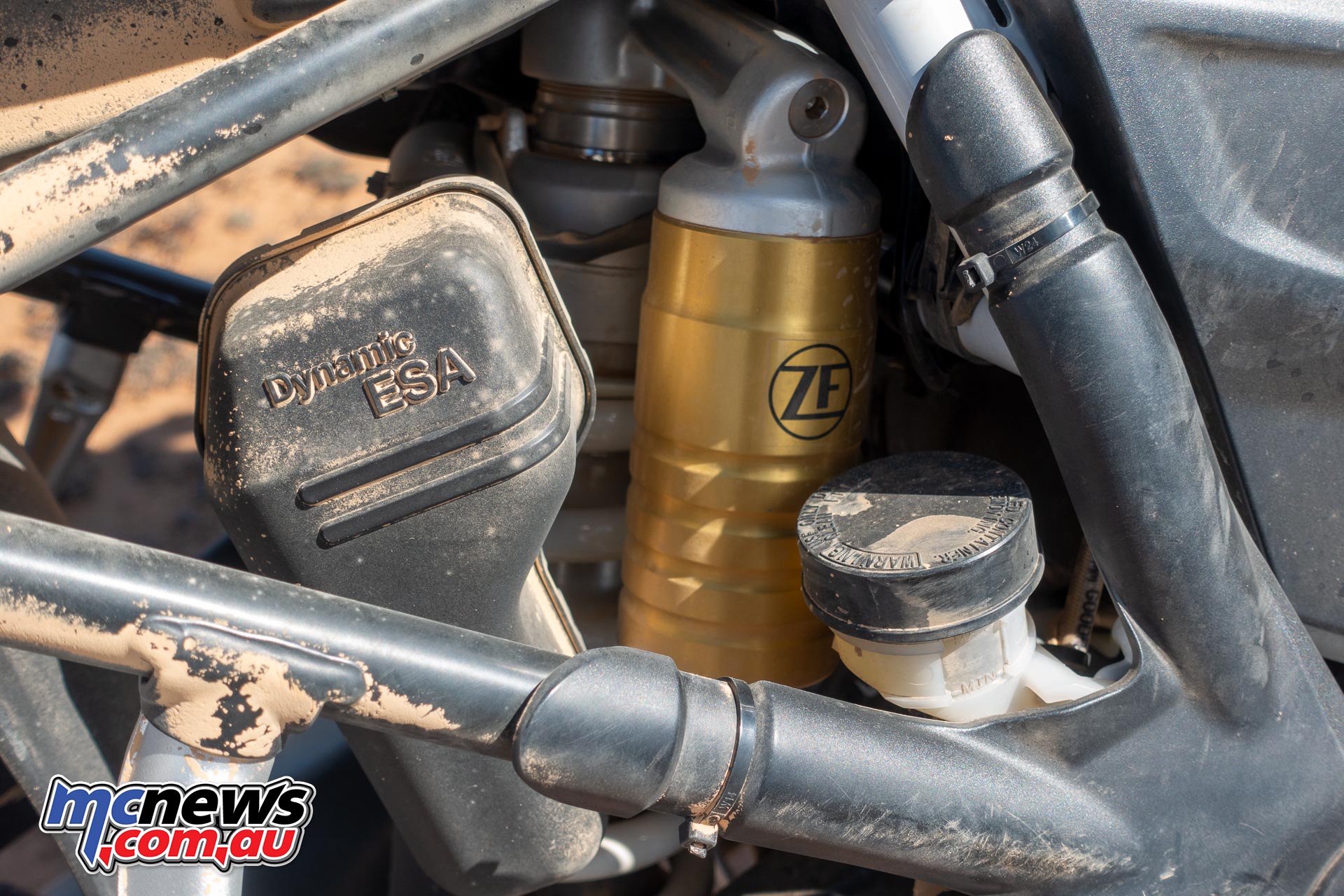
Especially when on the straight bits you can set the ESA to its plushest mode and just roll on in relative comfort. That’s sort of important now that I am not as young as what I was when exploring the Pilbara on an old XT more than 25 years ago.
